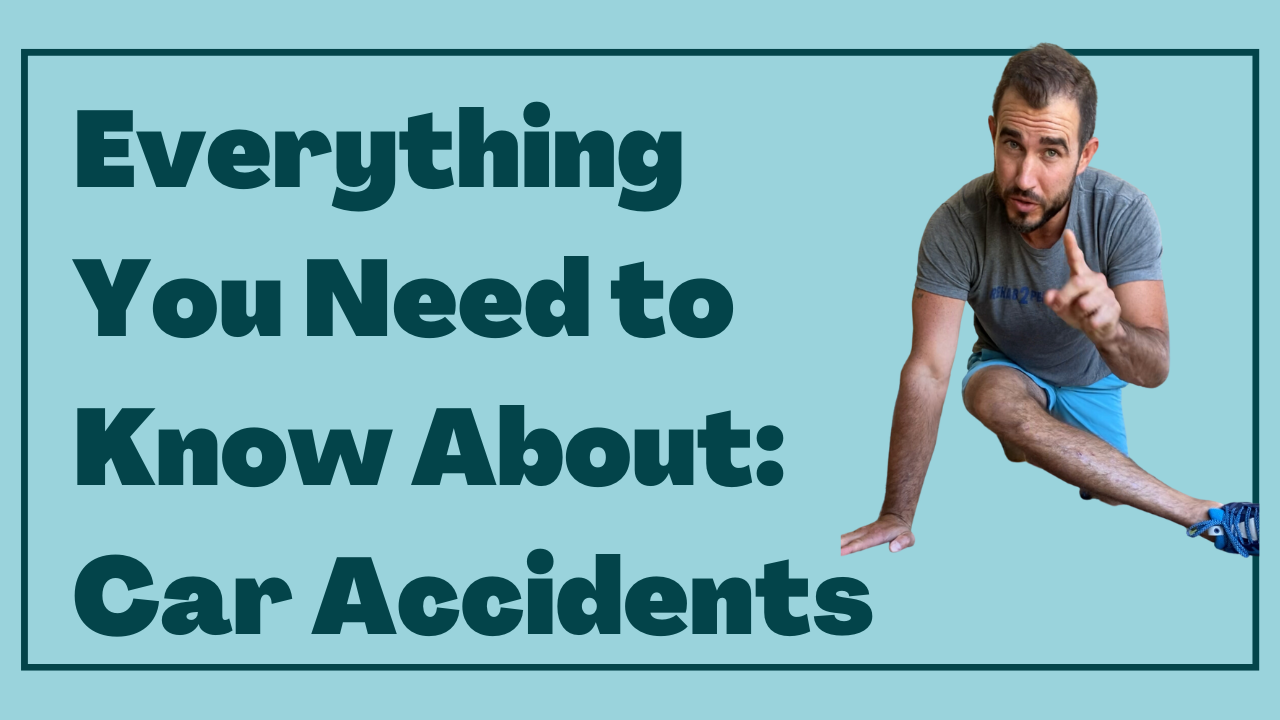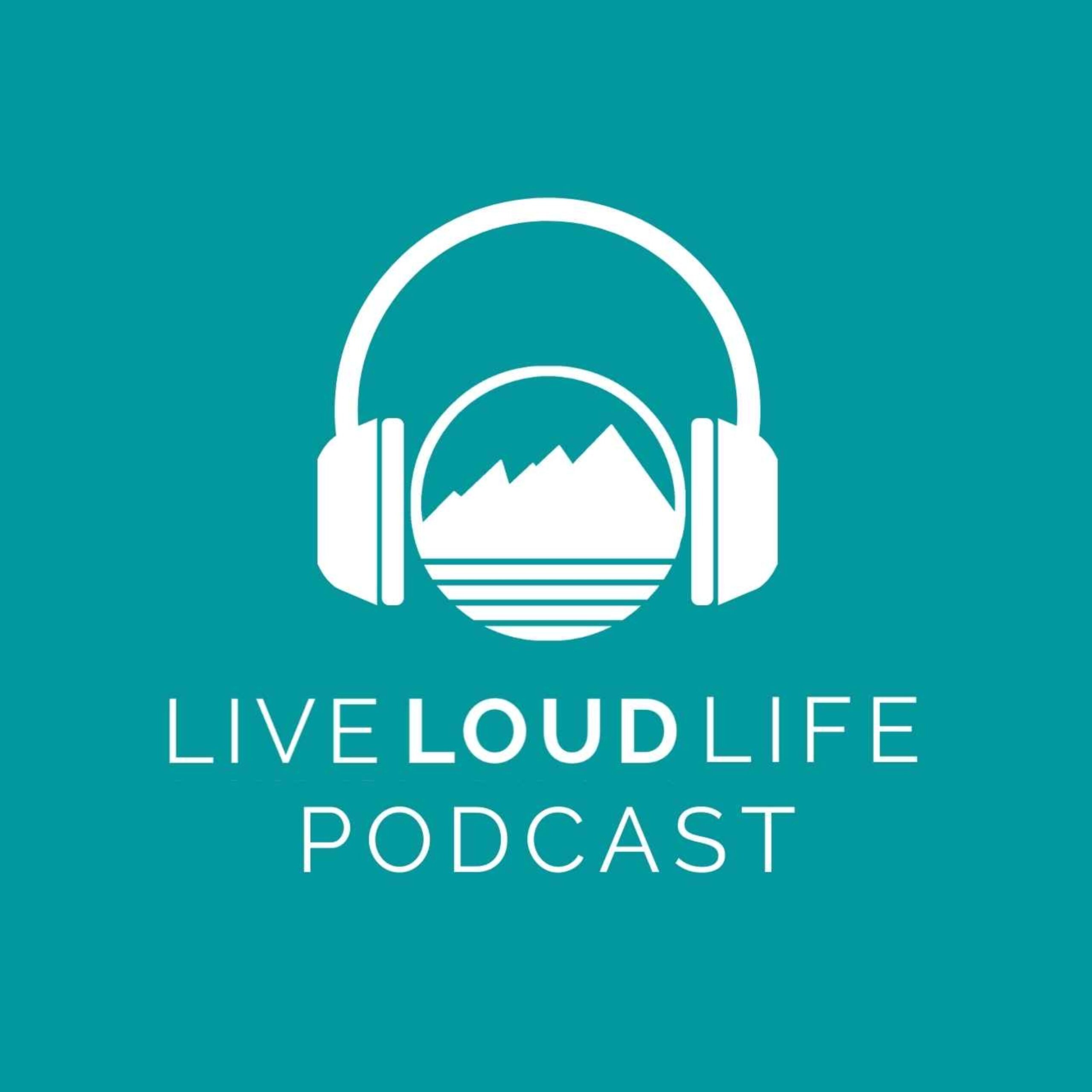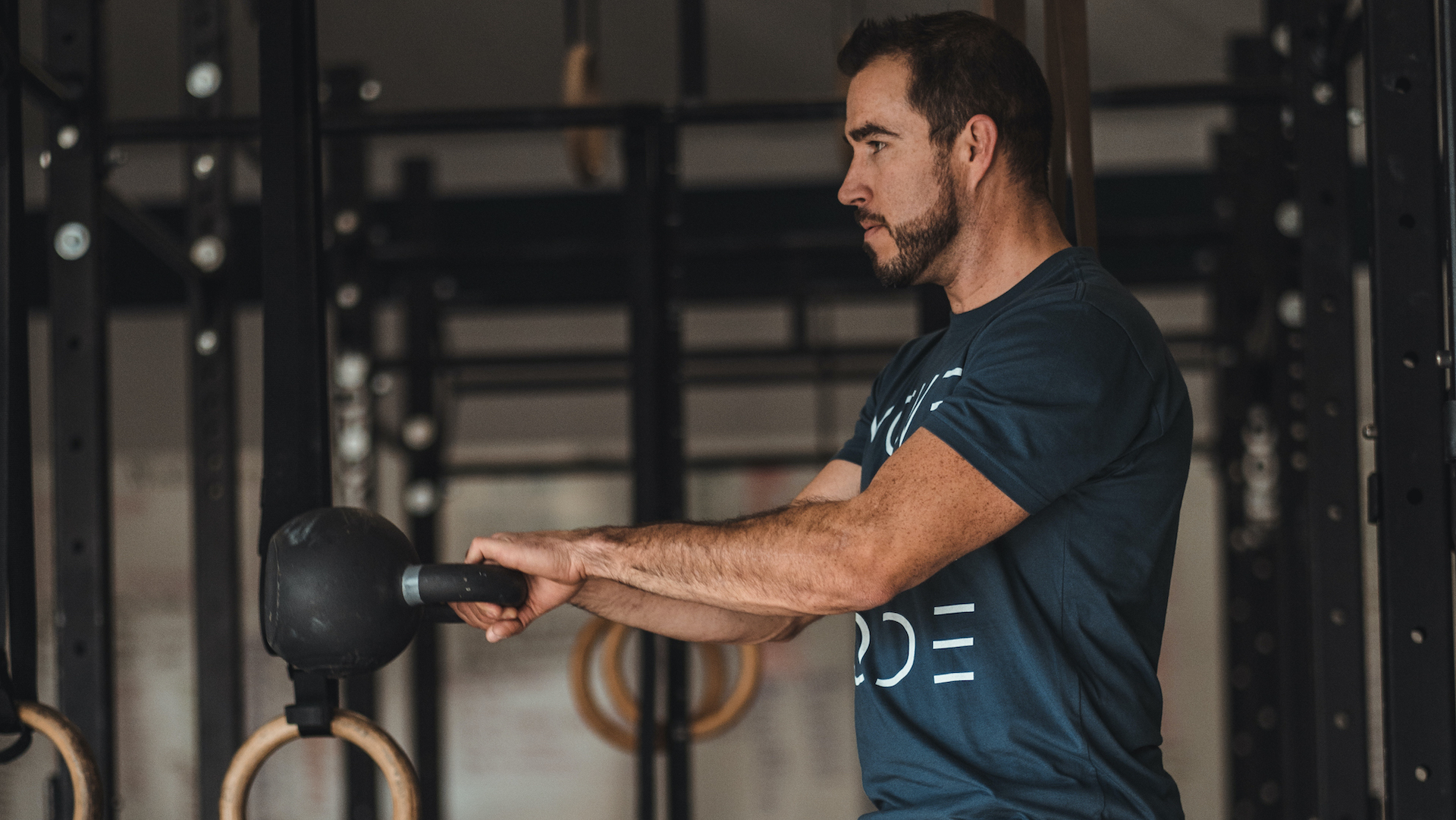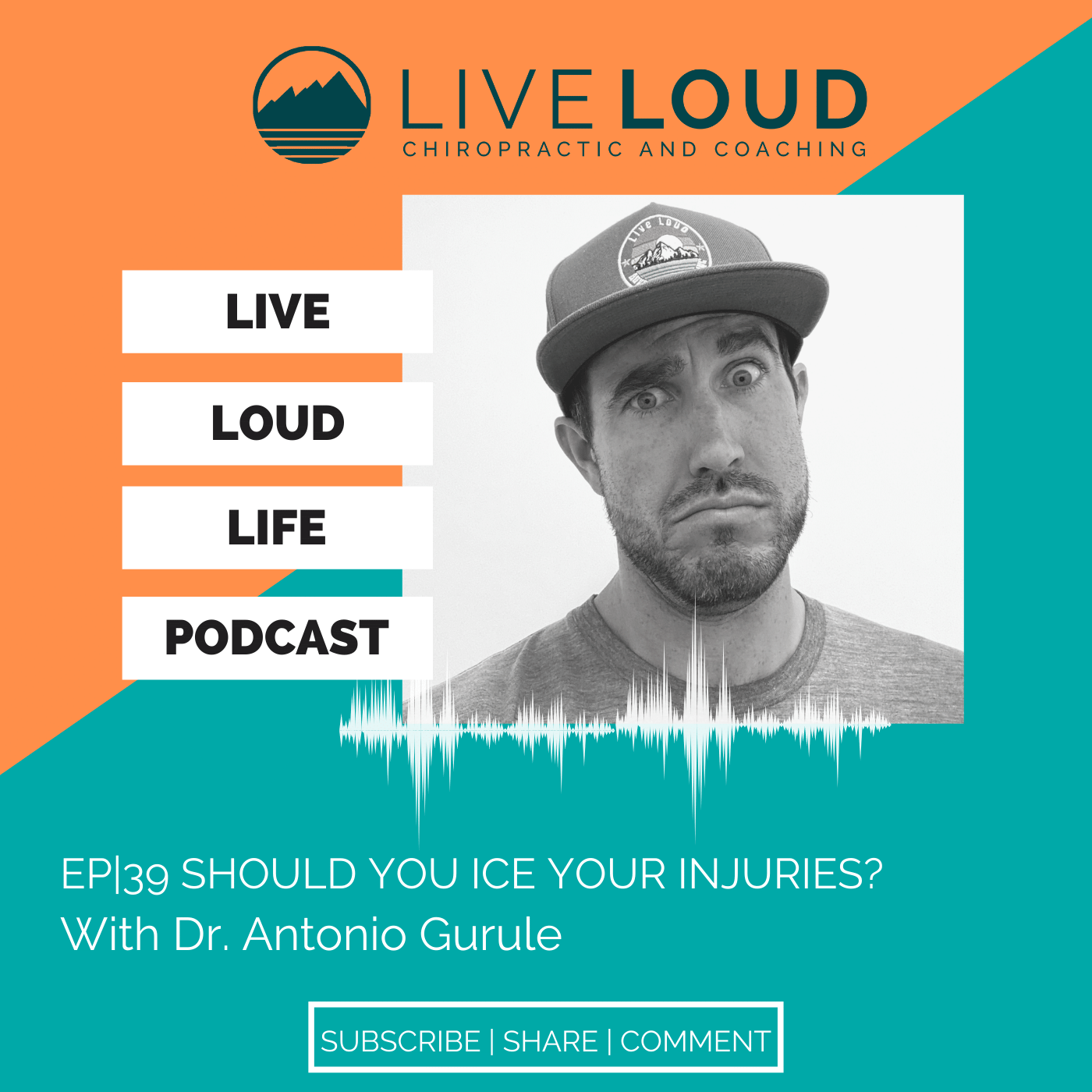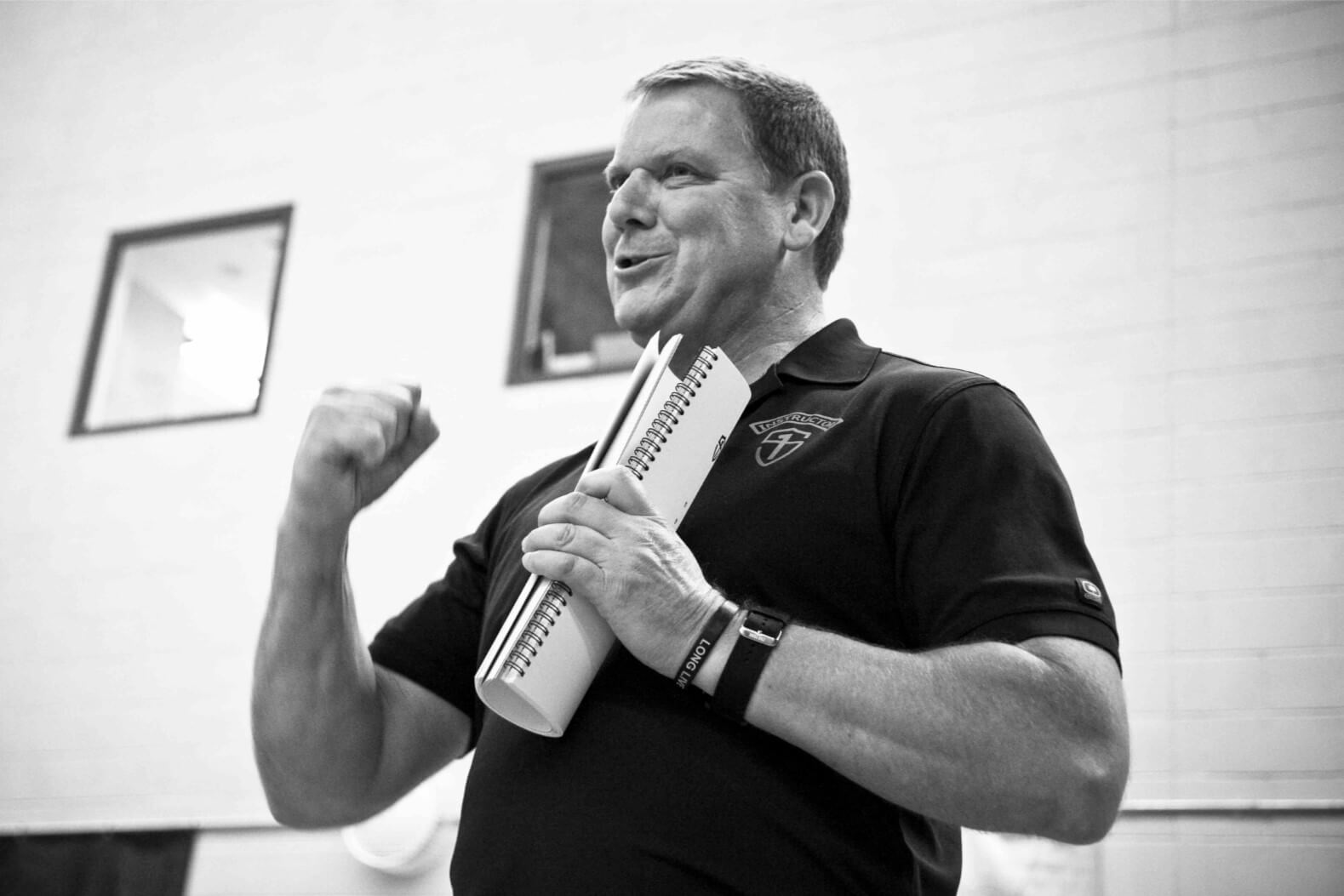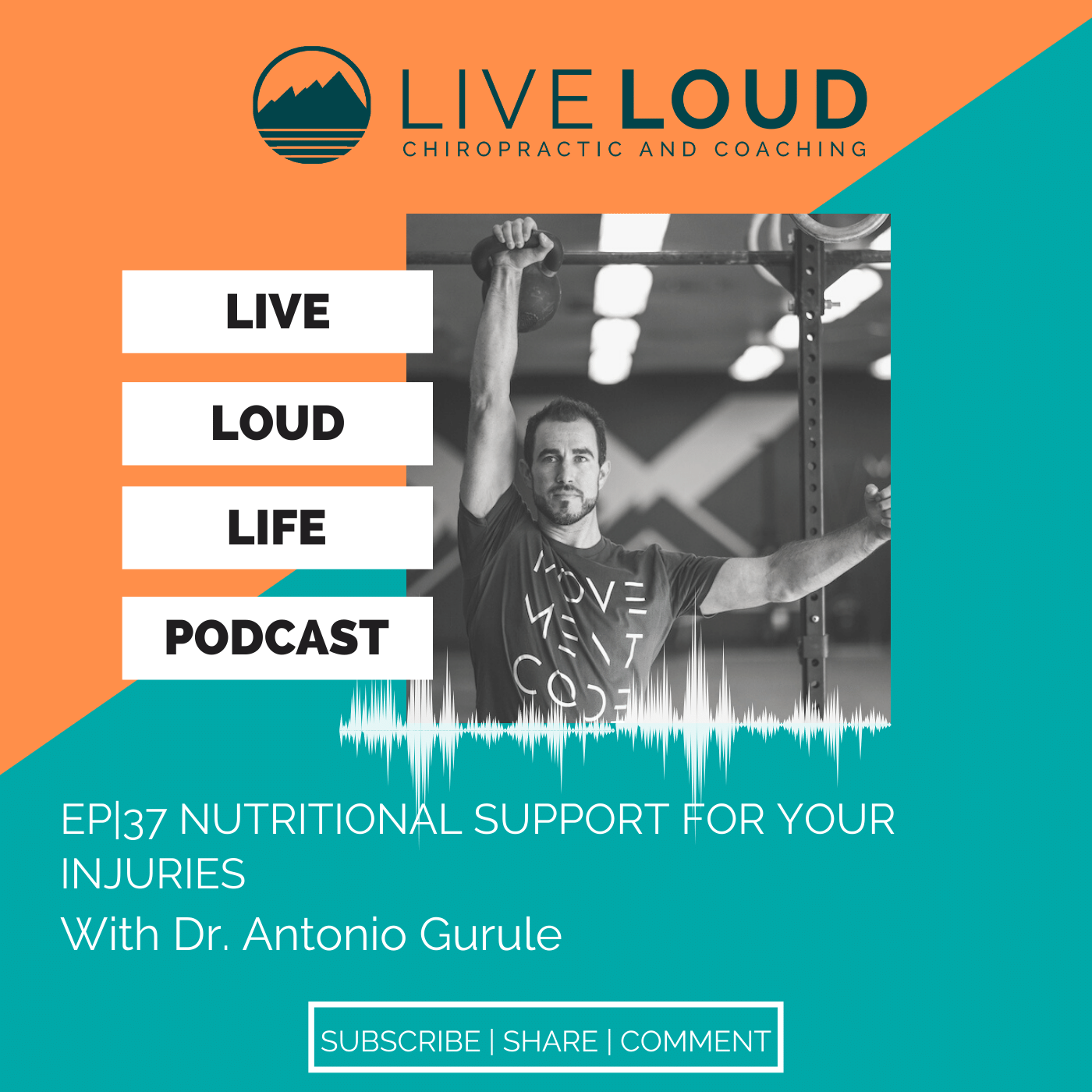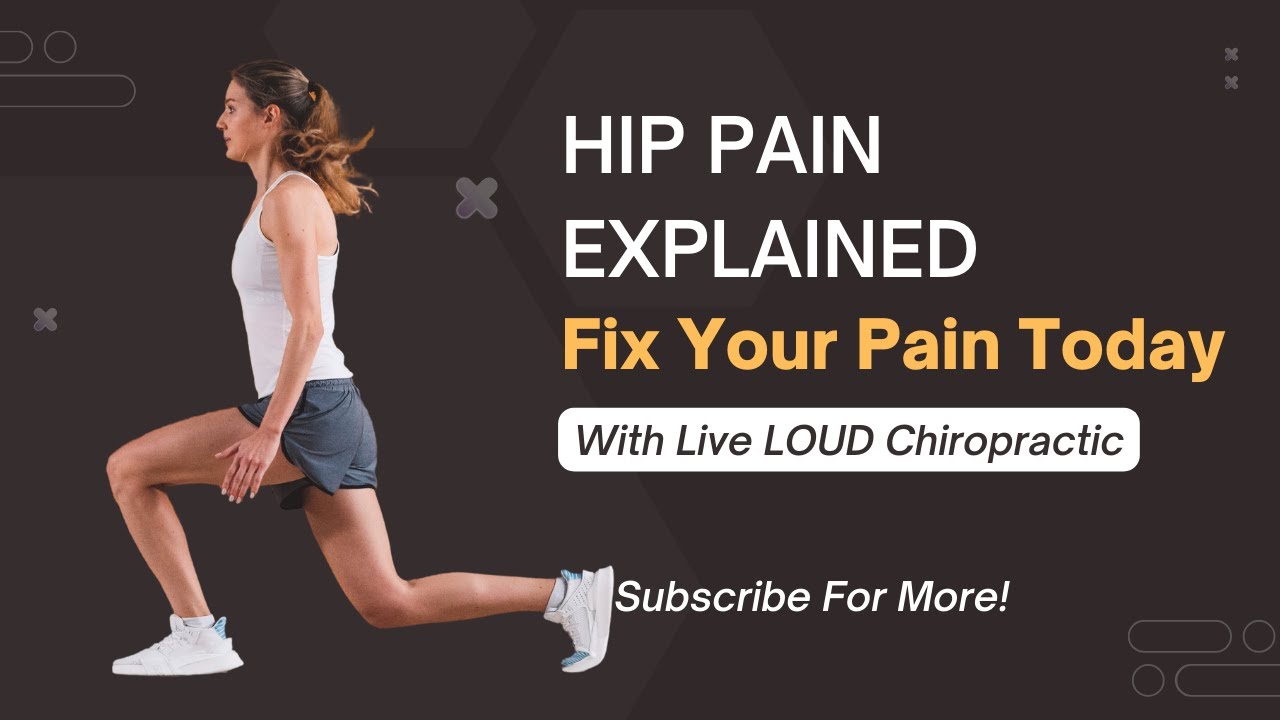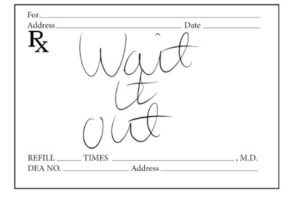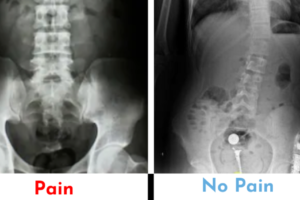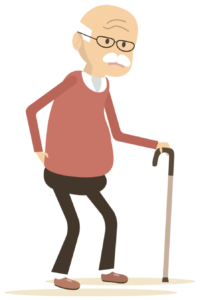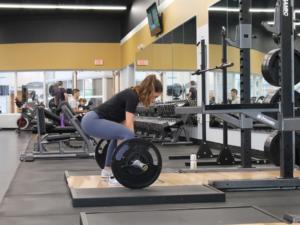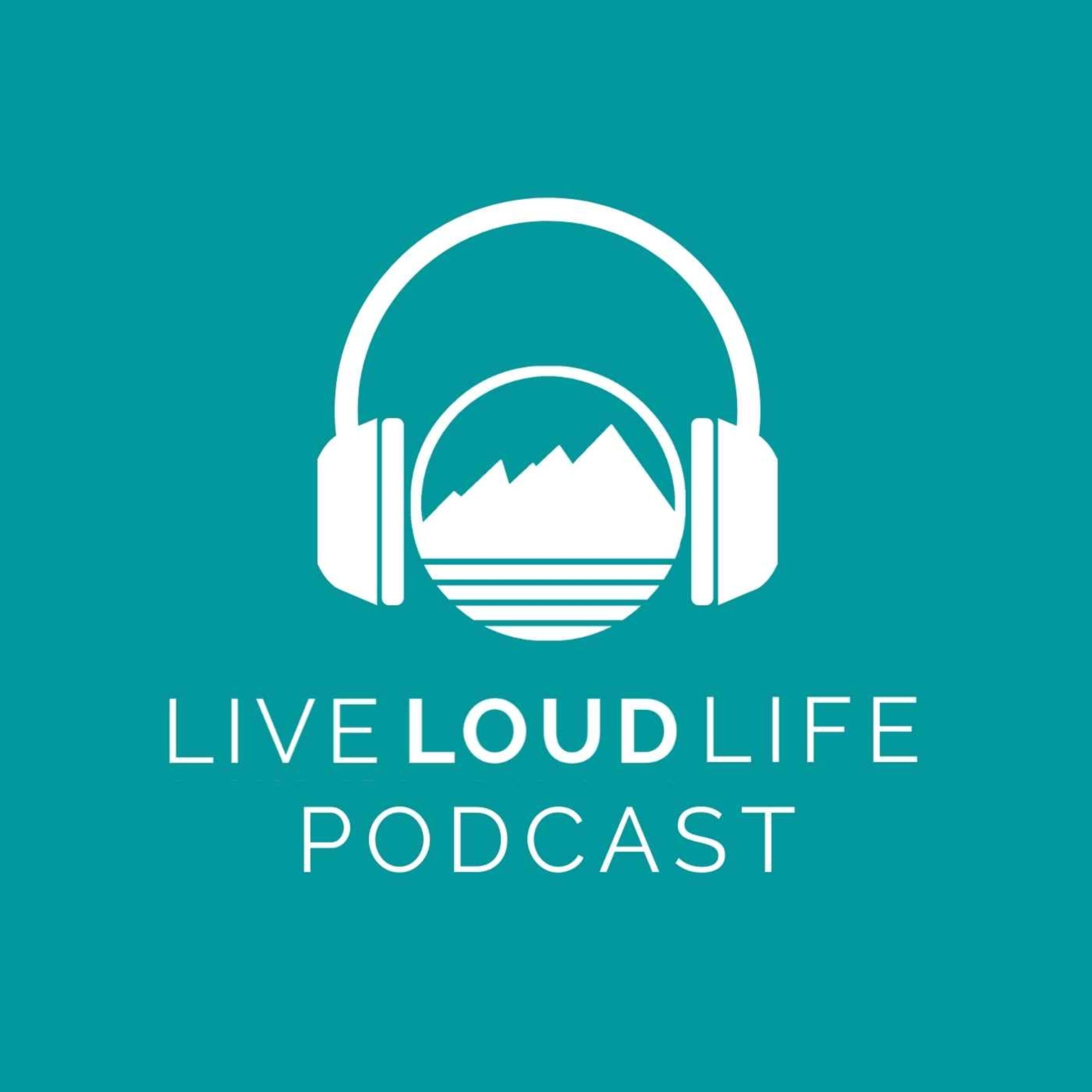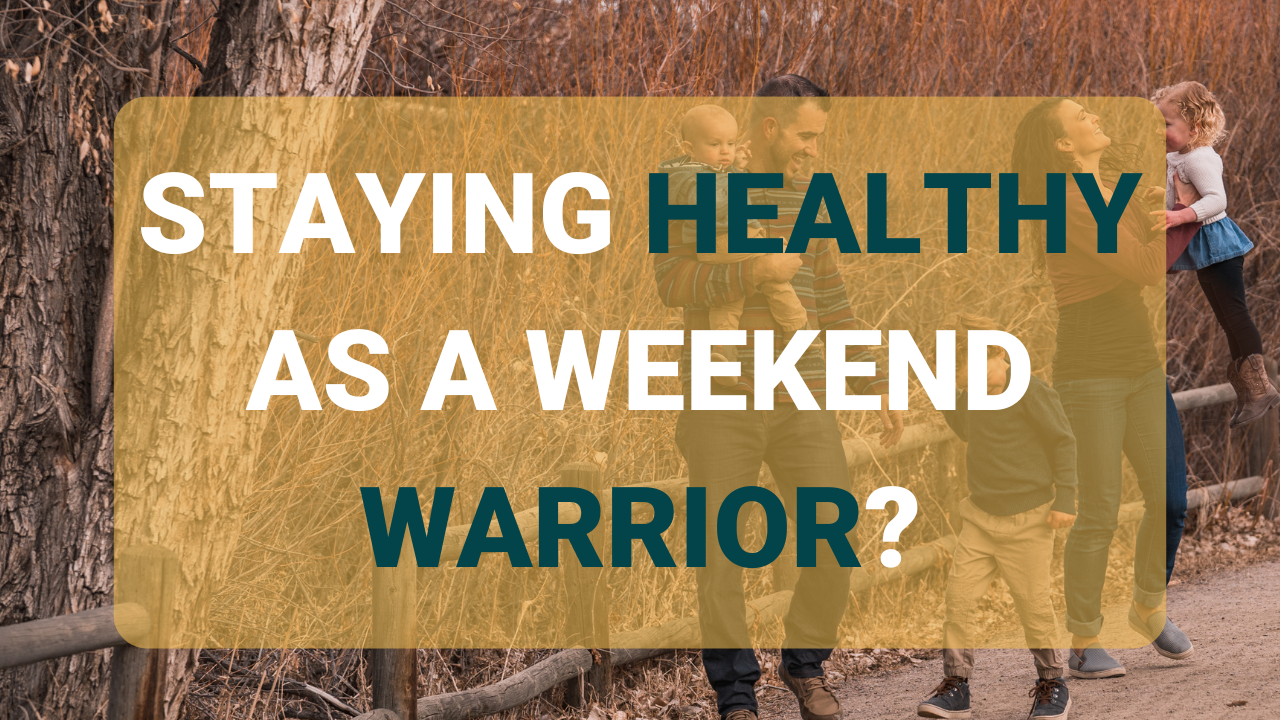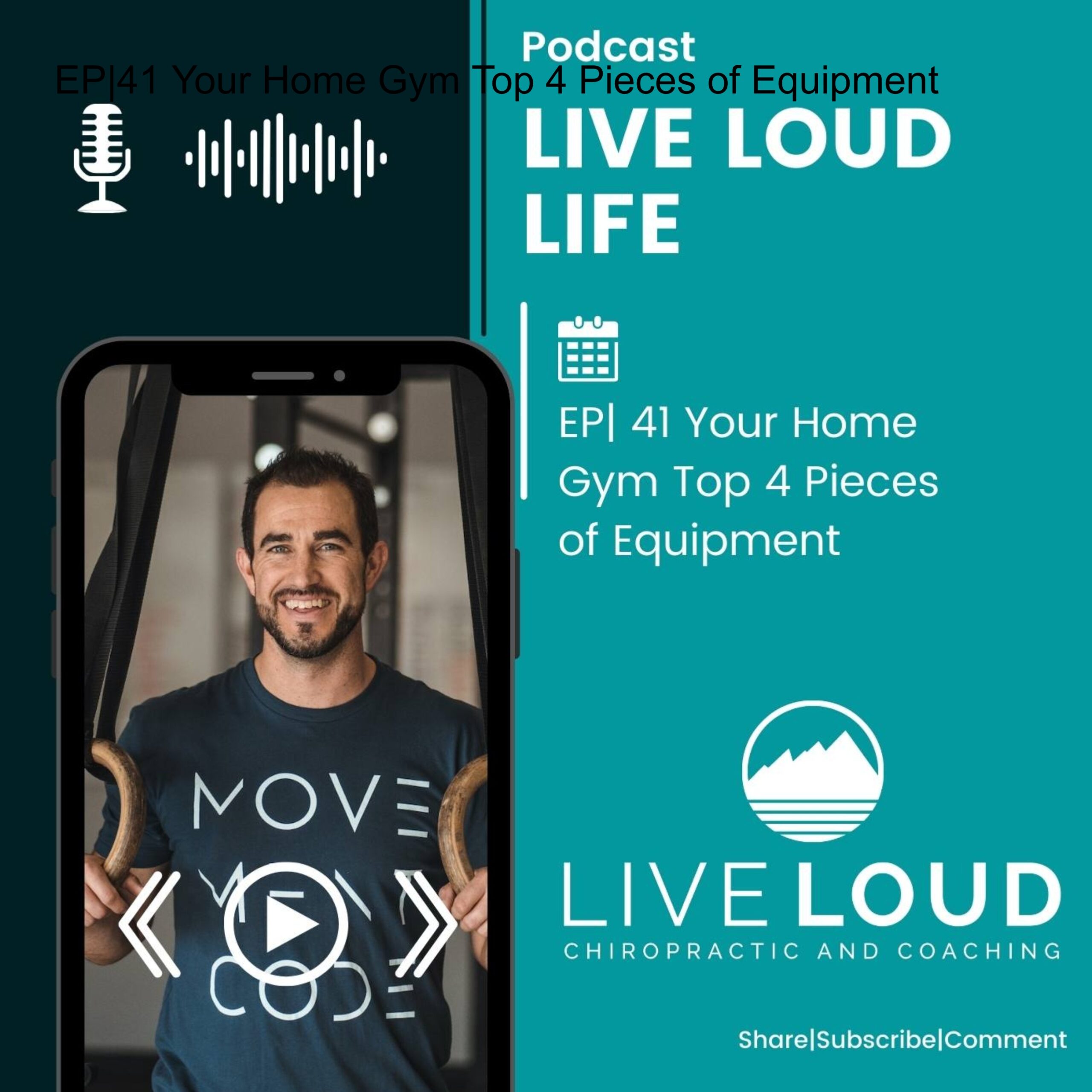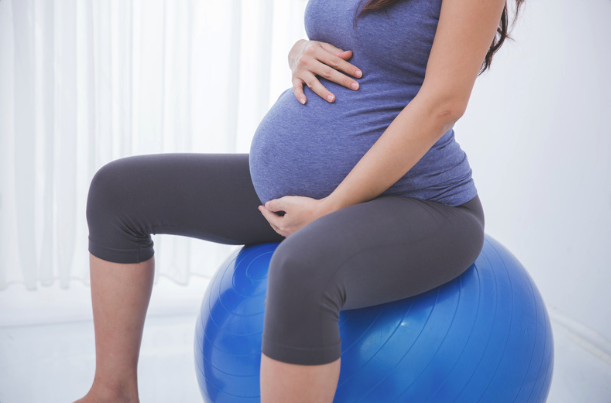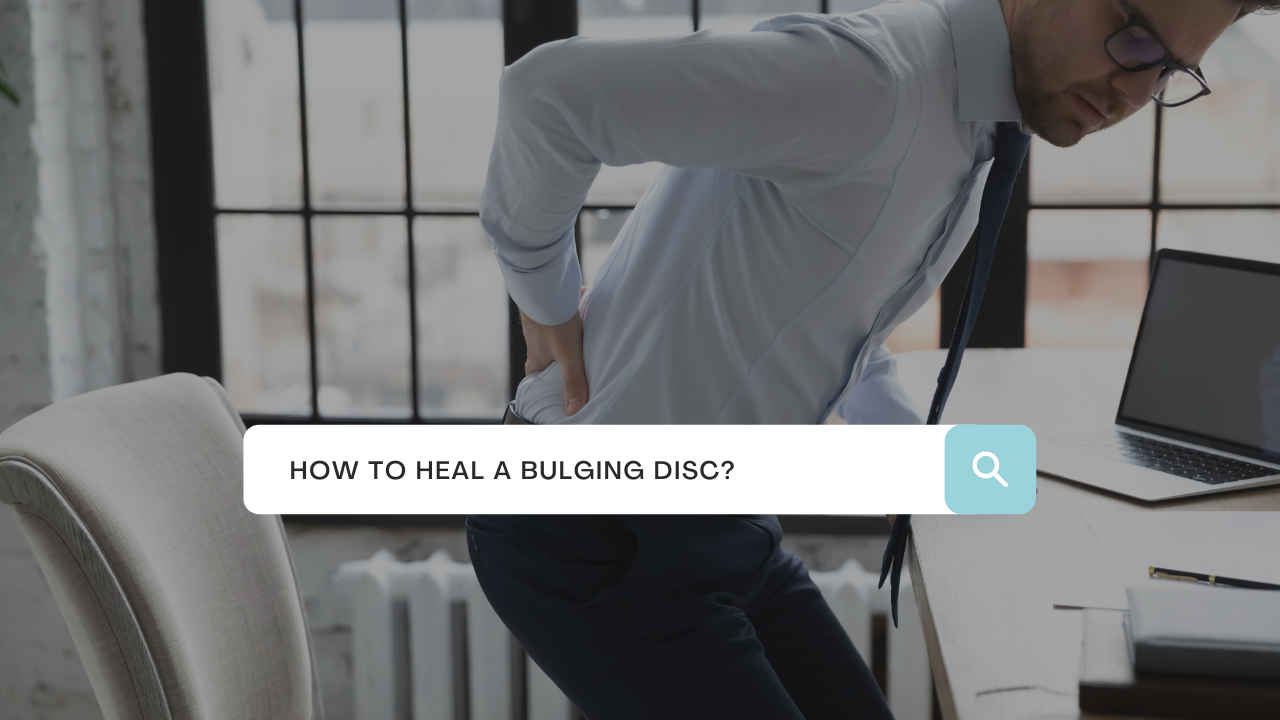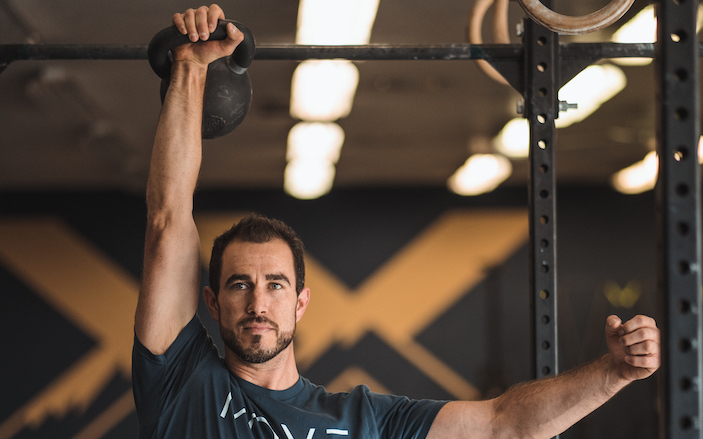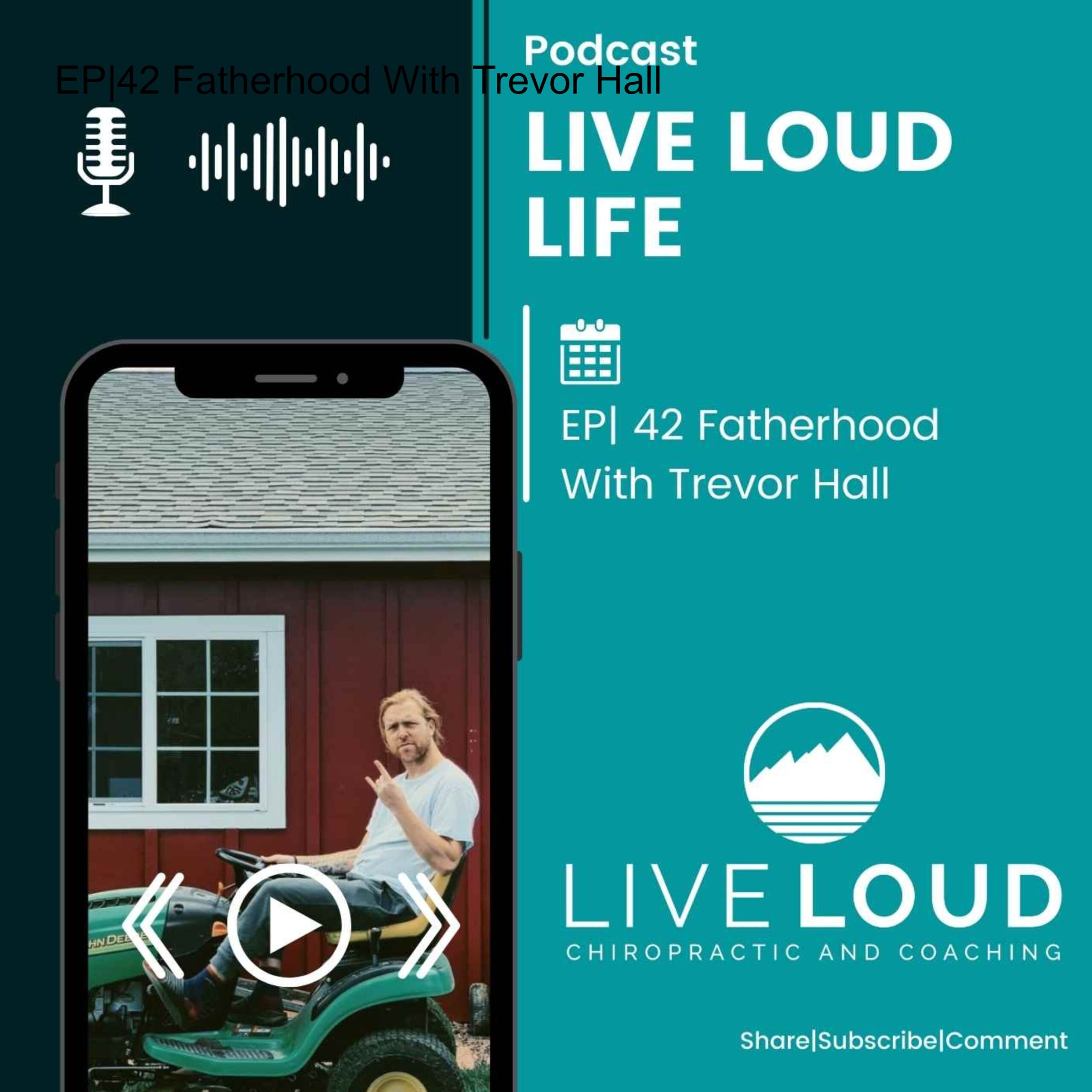Sports Chiropractic
3 Exercises to Improve Hip Mobility
Hip Mobility Series
Do you have tight hips? Do you want better hip mobility? Here is a series of three hip drills that will help improve your mobility and stability.
We’ll also articulate how to create dexterity around the hip. When we have dexterity, we have more control. Creating more control allows us to have better movement, and better movement awareness, depending on various activities.
When it comes to the hips, we typically assume we move the leg kind of around the body, which is important. But some of these drills will show how we can move the body about the hip, which is really important for sports and performance because a lot of these rotational movements or other movements are going to be our torso and our hips moving around our stable hip, which is planted into the ground.
I’m Dr. Antonio with Live Loud Chiropractic and Coaching in Lafayette, Colorado, and today I’m going to show you these hip exercises in series, and explain how you can go about them, and how they can help your hip mobility and stability.
PLAY VIDEO ⬇︎
The Hip Airplane
We can do the hip airplane in a couple of different ways. The main thing to keep in mind is when we’re doing a lot of movements around the hip, the leg is moving around the pelvis.
But here, we want to ask, how can we control the body moving around the hip?
We’re going to first start with a split stance. A split stance simply means one foot forward and one foot backward.
From here, I’m going to try to put the majority of my weight in my front leg. And my back toe is simply touching the ground for a little bit of stability. So here, what we’re going to practice is just opening and closing the hip. So the front leg ideally has toes pointing straight ahead. And the front hip ideally has the knee in line with the toes.
But you can see in the video how my torso rotates around. So what we wouldn’t want is if I’m falling, my knee comes in, or as I’m coming out, that knee is pushing out. I want to maintain some rigidity and planting through the ground. I’m thinking about is my pubic bone and my sternum, opening away, and then closing towards. I don’t twist through my back because I want this whole system to come with me.
That is the first step to understanding the whole movement.
Now, ideally, what we’re going to build up to is being able to do this without any help. So what you can do is use a foam roller or a countertop to help you balance so that we can create that first stepping stone into understanding the movement.
As you can see in the video, using my hands to balance, I’m going to reach my heel and my hand away from each other. Same thing as before: I open away from the leg, then come down and close towards the leg. (What’s nice too is you’ll actually feel a nice big stretch in the hip muscle here.)
You can also put a plate on a squat rack to use for balance and rotate on that plate as it’s anchored into a barbell or whatever rack you have.
The importance is the control of the torso moving around a fixed point (the planted foot). This is important for a lot of sports and activities that we do because a lot of what we do is plant a foot and then everything else rotates around that fixed leg.
Hip airplanes are not intended to be done fast or sloppy. These are about control, creating dexterity, and improving mobility. If you’re finding that in one of these planes of motion you feel a little tighter, you can actually hang out there a little bit and get a stretch. So there you have it–hip airplanes. If you’re not doing them, give it a try. They’re super beneficial for good hip health.
The Windmill
Now we’re focusing on creating torsion or torque within the hip. We tend to think of torsion as tight. Think of torsion as creating lines of tension where we want lines of tension, and then releasing where we don’t want it.
To do the windmill, the feet maintain a fixed position, and then we rotate in whichever direction from there. This can be a great mobility test, which I learned from a previous colleague of mine, Dr. Jordan Shallow with Pre-Script. He uses it as a test because by fixing this, we really get a true understanding of thoracic rotation and hip rotation.
I like being in a more open position for the actual mobility drill, I don’t like fixing it. Because again, primarily, my patients are not as performance-based, where they’re having a range of motion restrictions; I don’t want to put their shoulders in precarious positions, or create too much tension in an area that needs to move.
So our feet are going to move opposite to the direction of the hand that has the weight. We’re going to start with just bodyweight first, meaning it’s just my arm up–I don’t want to load yet. But you can see in the video how my toes turn.
Now, the most important part of this movement, just like when we do a hinge, is that my butt moves away from my toes, or in the same direction on my heels. The same goes true here. So if I’m square to you, and I turn 45 degrees, I do not want my hips moving. This way, my hips should be moving away from my toes in this diagonal fashion that we’ve just created.
Now, a very helpful cue is taking the front arm, or the down arm, and trying to slide your forearm down your thigh, towards your inner shin. As one arm comes up, opposite to the front leg, the other arm slides down, and my hips shift away. The majority of the weight is on your front, you can even bend the toes on the back foot a little bit if you want. This allows me to sit into that front hip more to work the mobility and stability of that front hip.
Again, those go hand in hand. When we’re trying to create stability, we have to have a certain amount of mobility. And for that mobility to happen, we have to feel oftentimes very comfortable with the stability in that hip. So that’s why we’re talking about both of these processes together.
I’m also testing and working on thoracic rotation, which is good as part of the test we have just indicated. And if I have a weight above me, I’m working on that shoulder stability as well.
But from a mobility perspective with the hip, we can now change that toe variation angle to coil and create more tension, as previously mentioned by Dr. Shallow. By squaring up, then doing my motion, I’m going to challenge the amount of hip and thoracic rotation we see.
I like doing these in sets and reps. I tend to not do them crazy heavy because I am working on it from more of a thoracic rotation and hip mobility perspective. You can load it up a little bit heavier if you want to challenge shoulder stability and some other factors as well.
I’ll try to get weight overhead. I tend to use between 12, 16, and maybe 20 kilos, and then I’ll do some easy movements. I might find, oh, this one’s a little tight. Then I’ll sit into that hip a little bit more, then I’ll come up. And when I’m down there, too, I’m playing around and just wiggling to see where I might need to focus a little more time and attention.
The windmill can be done with a kettlebell, a dumbbell, or just bodyweight. But it’s a fantastic exercise for challenging first and foremost, shoulder stability, but what I really love it for is a spinal mobility movement and a hip mobility movement, which really helps open up the hips.
The Turkish Get-up Windmill
This is great for challenging mobility and stability, but also for working on positioning. A lot of times we can’t progress with the Turkish Get-up because we’re missing certain stages that are super advantageous for stacking yourself appropriately to then transition into the next phase so that you can get up.
We’re going to do it first with bodyweight. To start, whether I’m going down or up, I’m going to be in this lunge pattern. Now, what’s important is if I’m coming down or up this middle phase, I need to square my hips. What does that mean? One toe is pointing in one direction and the back toe is facing another direction. My knees are facing 90 degrees away from each other.
This allows me to sit my bottom hip towards the back heel, allowing me to hinge down into the movement. Now, this is where the mobility comes in. A lot of people with tight hips will see that that top knee collapse down, but we want to try to keep that stacked. That’s where I get that 90-degree shape I had. I’m also starting to open up and challenge that downward knee or inner thigh as I hinge and turn. So this is the Windmill within the Turkish Get-up.
So I’ll stage this for clients or patients as practicing what this feels like to just work on hip mobility and stability in a different context. If you start to fall in as you go back and forth, we see where that tension is wanting to pull you in, and where we’re biased to not being able to appropriately load.
So we’re going to practice this first, without weight, coming up and down, loading into that hip, and coiling up and down, starting to loosen up both hips extremely well.
So let’s say, for instance, I’m coming down, I’m going to lunge back, then I’m going to windshield wiper my top foot so that my knees are at a 90-degree angle. I’m going to sit this bottom hip back towards my heel, slide the hand down in line with the knee. Now I’m in the position to kick that leg through, and then I would reverse down.
On the way up, it’s the same thing. Once I’ve come up to my hands. I’m going to pull that knee through, but it’s got to open up at 90 degrees to the top, so I can pull my leg through into that windmill. Then sit the hip back, pop up, windshield wiper the leg around, and then we’re gonna stand.
So that is the windmill position within the Turkish getup to challenge mobility, not only in the thoracic spine, definitely in the hips, but also challenging the stability of the shoulder as well.
The Prying Goblet Squat
The goblet squat is one of my favorite exercises. It is great for teaching the squat pattern, but also for showing and challenging how we integrate core stability.
It is also really good as a hip mobility drill because it puts you in a position where you’re loaded and helps you get down into that deep position where you can kind of offset that weight. But because you can get your elbows down inside of your knees, you can start to pry your hips open to use it as a mobility drill.
First take a weight, bring it up like we normally would for a goblet squat. And then we’re gonna simply squat down. And notice if I hold it away from me that’s going to allow me to stay more upright. But now I can wedge those elbows in between my knees, and start to bob and weave and shift and pry open to stretch those inner thighs and that inner hip.
Now, you could try to maintain a straight back and still do the same thing. We’re just showing that if we want to try to get into this position, to use the elbows to open up the hips and widen that space to create more mobility. This is something that we que consistently when working on a squat pattern.
Oftentimes, our squat patterns turn poor where we’re leaning forward or something. Not always because we have poor mobility, sometimes we’re just too narrow and we’re not able to utilize a hip range of motion.
So we’re trying to find that squat stance and enhance that range of motion by prying the hips open. So what we mean by pry is if my two ball and socket joints in the femurs move away from each other, now I have more space for my torso and pelvis essentially, to sit down in between, which helps me keep some more upright squat pattern, which will help in performances, such as front squats, overhead squats, even back squats, depending on the position of the bar, so prying goblet squat is a fantastic mobility drill.
Conclusion
Remember, you do need to have a certain amount of mobility to even get down into these positions. So you might need to utilize a lot of other hip mobility drills that we have to first get there because we don’t want anyone to sacrifice or create any issues by forcing yourself down low enough just to get your elbows in.
Goblet squat or prying goblet squat–use it as a good mobility drill. Use it as a great warm-up before your squats or any of your other workouts because I know it will be beneficial for you.
Keep up the great work and LIVE LOUD!
Should You Ice Your Injuries? EP| 39
Live LOUD Life Podcast
Lafayette Colorado
Episode 39
EP| 39 Should You Ice Your Injuries?
With Dr. Antonio Gurule
Dr. Antonio Gurule dives into some of the pros and cons of icing your injuries.
Ice has long been one of the go-to methods for immediate injury care.
While there are benefits to icing your injuries, you might actually be prolonging the recovery and healing process.
The RICE protocol is dated and has changed.
Movement and motility is the key to recovery.
About Dr. Antonio Gurule
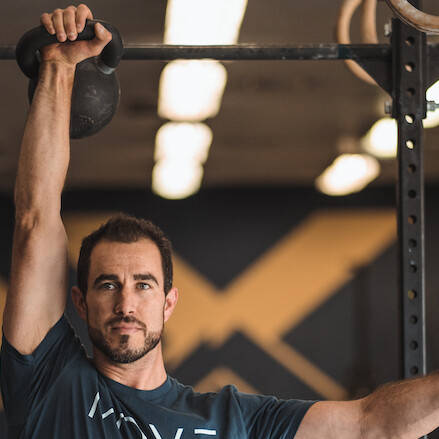
Background:
- Father
- Doctor of Chiropractic
- Owner of Live LOUD
- Personal Trainer & Health Coach
Check Out Some of Our Other Blog Posts and Podcast Episodes
Anthony Gurule 00:00
Hey what’s up guys, welcome back to another episode of the Live LOUD Life podcast. My name is Dr. Antonio, I’m your host of the Live LOUD Life podcast. My wife and I, we co-own Live LOUD Chiropractic and Coaching here in Lafayette, Colorado. We are just outside of Boulder, Colorado in Boulder County. And our mission is to help families. We want to help make families stronger, so that we can build a stronger community. We want to help guide you to the adventurous life that you and your family were meant for. And we do this through chiropractic and coaching. chiropractic, obviously being more of a hands on approach, more of a clinical conversation, clinical diagnostics, but the coaching aspect is really what we believe is, you know, the foundation of what our system methodology, whatever you want to call it is, because a lot of this comes around through just coaching suggestions and recommendations. also, you know, obviously within that comes into clinical prescriptions of certain things to eat or supplements, so on and so forth. But it’s coaching a lifestyle, it’s coaching, it’s coaching a philosophy and a foundation about how to live an active healthy life as an individual, and setting an example of a healthy active life for your family, for your immediate family, for your friends, and more importantly for your community. So stronger families to make a stronger community as a whole would be a win win, right? And that’s what we want to be able to do. we want to be able to help fill in the gaps in the holes that you’re maybe not getting from, from other roles and conditions.
Anthony Gurule 01:43
And today that’s in particular where we’re going to talk about. it’s going to be a little bit more of a shorter episode because this is more of a quote unquote, you know, just discussion around how to lay out a framework and a better understanding of how to work out or what exercises are safe or maybe not safe during pregnancy. This is a very, very common question that we get.
Anthony Gurule 02:12
My wife Nichelle has created a mini course that has some workout ideas, recommendations, and prescriptions than laid out into a workout. She guides and educates other clinicians on how to broach this topic as a chiropractor, how to better serve prenatal patients through chiropractic care, but also exercise recommendations and prescriptions, having recommendations with other personal trainers within the community whether that’s CrossFit whether that’s Orange Theory, chatting with coaches and owners and saying hey, if you have prenatal patients and they’re having these types of symptoms, or this has happened, here’s some better recommendations, not modifications. We call them lateralizations–you’re just you know, you’re doing something something different or something else we you know, we borrow that term from Charlie Weingroff, who’s a physical therapist and strength conditioning coach. But it also and also doulas, right, doulas and midwives and OBs who are directly involved with the prenatal process from nearly conception all the way through, having this conversation. we know that exercise is important during pregnancy,
Anthony Gurule 03:19
There are so many different studies that talk about the benefits of exercising during pregnancy, not only for the mom, but also for baby, which is quite interesting. They’re seeing increased cognitive-what’s the word I’m looking for? Excuse me, their cognitive output as a as an as a child through as they age is actually better from moms that actually worked out during pregnancy.
Anthony Gurule 03:50
Now this is tough, right? How do you define working out or exercise? it’s different for everybody. But we want to, and we encourage that, and yet we’re sympathetic to the different stages of life, aches and pains, so on and so forth, which obviously would limit what you can do from an exercise perspective. So you know, it’s a bit of a gray area on determining what is working out? what is exercise? What are the physical guidelines or recommendations for pregnancy? And without getting into the like, nitty gritty detail of every single thing. And obviously, every potential situation, if you had this versus this, what could happen? we’re not gonna be able to do that. What we just want to lay out is what is what are we trying to accomplish here, and we want to encourage you to stay as physically active as possible.
Anthony Gurule 04:41
And one of the things that constantly comes up is, well, should you add something in that you have not already been doing? Let’s say for instance, someone just through the stages of life with work and kids or whatever that is, they were not able to work out as much before they got pregnant, but now that they’re pregnant, whether they have more time or they understand the importance of exercises during pregnancy, well, would we say, “Well, you haven’t been exercising, so you shouldn’t do too much.” No, that doesn’t, that doesn’t really make sense. Now, we would encourage not to do too much, there’s obviously, you know, a too far swinging the pendulum of the other way. But we wouldn’t say “no, don’t exercise because you weren’t doing something before,” we just have to find those first few stepping stones to help them start to gain some momentum. and help hold their hand, if you will, So that their technique and they feel confident about lifting, or how far they’re walking or whatever that is. And that’s an important topic, because a lot of times people want to add things in, but they weren’t quite ready or weren’t doing them before. And they then assume that they’re not able to do them at all. So you do have to take that in consideration, there is a ton that you can do, and that you can still add, even though you weren’t doing them prior to pregnancy.
Anthony Gurule 05:54
Now on the big questions is, is it safe? you know, outside to contact sports, or different things like that the majority of what you’re going to do is safe for pregnancy, right? Rock climbing, we have pregnant patients that have been rock climbing before, obviously, there’s a certain inherent risk with certain sports or activities. You know, you could fall off riding your bike, you could fall over running, right, so we’re not encouraging any of these by any means. We’re just kind of, you know, setting some suggestions, if you will. And you have to take into consideration.
Anthony Gurule 06:31
Now, there are certain things to consider when you’re talking about like weightlifting, and how heavy and the intensity that you’re doing. And if you’re doing Valsalva movements, which is essentially holding your breath to maintain a more rigid or stiff torso, as you’re seeing changes in blood volume and blood pressure, you know, you do have to take that in consideration. And that is again, of course a conversation with your provider that is managing your, your pregnancy, but we recommend Mama’s weight lift, or do resistance training. During pregnancy, again, we talked about about load management and the intensity and things like that, but you can still lift and do fairly intense things. And it’s a fairly as a you know, as a scale and a wide range during pregnancy and see a ton of benefit from that. Now, are we trying to hit one rep maxes and PRs during pregnancy, I mean, some would argue yes, but I would argue, why, that’s not really an accurate representation of what your strength is anyways. So you know, you do have to to kind of keep manipulating the numbers and the weights and the intensity and the sets and reps in order to do it. But weightlifting and resistance training is safe, and it is effective. Now, outside of that, there’s not a lot of unsafe things to do, again, outside of contact sports, or things that would elicit, you know, potential trauma to you or baby based on impact we’ve had, again, not our recommendations, but some have tried very just easy scheme, because they’re in the winter months, and they wanted to and they felt very confident about not falling. So you know, you have those types of things.
Anthony Gurule 08:16
Overall, again, we’re talking about movement. You need to move, and it’s good to get your heart rate up. And it’s good to breathe hard. So that doesn’t mean just because you’re pregnant, you can’t do HIIT training or circuit training or CrossFit or Orange Theory. But you do have to listen to your body and understand certain signs that would indicate that things might be too much, right? Now those are going to be different for everyone, but a lot of this comes down to you know, lightheadedness, you know, breathing too hard. Certain aches and pains within lower extremity, chest, abdomen, so on and so forth would be obviously like your more extreme ones. If you’re becoming pale or anything like that, I mean, again, these are the same criteria, though, that would be if someone else was working out or training too hard. So it’s realistically the same thing. It’s just that your threshold level for all those most likely have gone down. And depending on what type of an athlete you were before, you’re going to be maybe a little frustrated that you’re not able to do the things you were able to do previously, which makes sense. But if you’re someone who wasn’t exercising before, you’re probably going to be a little bit more hyper aware of that, of just feeling that shortness of breath or that uneasiness. So again, we’re not saying you have to push through that because we’re not trying to set yourself up for a strength and conditioning program to increase your metabolic capacity to increase your strength and conditioning during pregnancy. We’re trying to help you maintain a healthy active pregnancy.
Anthony Gurule 09:54
Now, walking. walking is great. but in general, we encourage you to do something above and beyond walking. Obviously, again, certain things would dictate that you would not be able to do so. And this is again, any exercise. Any exercise that you do during pregnancy needs to be consulted with and work through and have a conversation with the primary physician who is managing your pregnancy, whether that’s your nurse practitioner, your midwife or your OB or obstetrician, right. But we would encourage more than just walking. walking is fantastic, but that’s kind of like your baseline minimum, right? Just like our activities, or recommendation activity guidelines. We want a few days a week of where we’re kind of just doing this steady state getting our steps in, you know, kind of pushing ourselves, we’re huffing and puffing, but still just kind of at that conversational level, but you’re not really getting a lot of benefits outside of that.
Anthony Gurule 10:55
So if you’re just walking, high five. kudos. can you do something more? Can you do some bodyweight squats? Can you do some bodyweight, you know, good mornings? can you do some walking lunges? do you have a suspension training, we’re able to do some bodyweight rows? Do you have some bands that you can do some rows with? You know, there’s a lot that you can do that allows you to get a little bit more out of that. Now, again, this all comes back down to preferences of exercises that you like to do, because that’s gonna allow you to maintain the most consistency, but then also the intensity that you like to do. And we do encourage having an open mind and at least being willing to try some high intensity things that allow you to still get your heart rate up a little bit. And it’s okay to lift more than five or 10 pounds. And not saying that that is a bad thing. There’s programs out there where it’s all directed around that where it’s lighter weight, high rep, but I just don’t want individuals and mamas to feel like they’re not able to do more and or being ashamed because other people are just saying they should back off because they’re pregnant. “why would you need a lift that much?” It fits within your strength, and your comfort, and your wheelhouse, that is totally fine.
Anthony Gurule 12:05
Again, you if you’ve been doing that enough, you understand the risk reward ratio and having a conversation with your practitioner has driven us to kind of help navigate and guide as you start to get further through pregnancies, what things maybe we need to change or manipulate. But that’s totally fine. Now outside of that, the question around safe also comes up around core exercises. diastasis recti, pelvic floor strength, so on and so forth, we want to enhance the capability of understanding how to control tension within your abdominal wall and your pelvic floor through pregnancy, because the pressure is increasing due to baby taking up more space. But we’re not we’re not necessarily we’re not gaining more strength, right.
Anthony Gurule 12:45
And so what a lot of people assume it’s when we’ve seen this, is “I don’t want diastasis. So I’m doing more core work to prevent diastasis from happening.” diastasis recti will happen in 100% of moms, it’s estimated at the week 35 Everyone will have some form of it. Now it is technically not a quote unquote diagnosis, though, until 12 weeks postpartum, because it is a normal thing that everyone will get. So you can’t diagnose someone with something that everyone will get–doesn’t make sense, right? So after that, though, if you still have weakness or spacing issues, then we can have a you know, a stronger conversation about putting a diagnosis on that.
Anthony Gurule 13:26
But what we’re trying to enhance and help is what exercises are quote unquote, not safe versus unsafe, but adding too much pressure or tension into the abdominal wall or the pelvic floor and creating more laxity. again, as that pressure for as baby’s growing starts to put more pressure on the pelvic floor and the abdominal wall. If you’re doing more things that increases the pressure within the within the abdominal cavity that’s going to push on that separation even more and/or push on that pelvic floor even more, creating potential incontinence or prolapse issues and/or more bulging and doming within the abdominal wall stretching out that separation or that gap even further, potentially making the recovery process more challenging or slightly longer. I’m not saying that it will but potentially, so we do have to take that in consideration. So we go through activation exercise of the pelvic floor, of the abdominal wall so that you better understand how to control those pressure increases while you’re lifting or exercising so that you simply can stay at a management level.
Anthony Gurule 14:28
And that in turn, helps you get through pregnancy of understanding how to lift up your older kiddo, having to lift up dog food or anything like that. It’s just managing and controlling pressure. So there’s really not anything that I would say that safe or unsafe. Now, things that we would advise against for core exercises is sit ups or crunches. You know a lot of those things that create like hanging knee raises and different things like that during pregnancy. A lot of those things that create a lot of intra abdominal pressure and tension. and especially during a flex position, that tends to put a lot more pressure on the abdominal wall, the separation where diastasis will occur as well as the pelvic floor.
Anthony Gurule 15:09
So, you know, while we never say never, there’s definitely a category of things that we definitely urge against because the risk/reward benefit and again, risk not being “injured,” But risk of potentially putting more pressure and making the recovery process on the other side harder, is not is not something that we find to be as advantageous. But you can still get the benefits of quote unquote, core exercises through full body movements such as goblet squats, such as deadlifts, you know, depending on the phase that you’re in, push ups, which are, you know, a dynamic plank. or being able to do a TRX row, which is a reverse plank as you’re just lifting yourself up. three point rows where you’re on, you know, two hands or doing like a row on a bench, where you’re in a tabletop position that’s adding anti rotation exercises. So there’s a ton that you can do that still highlights and isolates, the core isolates, sorry. that highlights and will emphasize core activation, but through a full body compound movement. And what’s great about that is during pregnancy, depending on your energy levels, it’s hard to do all the little isolated accessory and all these separate exercises as it is. So it’s kind of nice being able to combine everything, so you get more bang for your buck, especially if you’re a parent and you’re on and you’re on baby number two or three, right?
Anthony Gurule 16:31
So what exercises are safe for pregnant women to do? All are. reduce or eliminate for sure contact activities, different things like that. the increased risk activities of you know, trauma and things like that. Outside of that you’re managing pressure, I would definitely encourage reducing anything that’s heavy lifting, that’s, that’s requiring you to do Valsalva moves, you’re having to hold your breath for an extended period of time. that changes blood pressure, so on and so forth. But outside of that, Pregnancy is a completely safe time to do all exercises. we definitely as we highlighted, urge and encourage, you know, certain things over other ones just for you know, added bang for your buck or full body movements, so on and so forth. And that, but outside of that you are free to do what you want.
Anthony Gurule 17:19
If you want guidance, though, you know, there are there are trainers out there that work specifically with prenatal patients. we would love to be able to have that conversation with you if that’s something you want to bounce back or navigate. Because we do want to encourage as much as we can. A very, very active pregnancy through exercise working out or however you want to describe that. So if you found this beneficial, please like share, subscribe. if you’re pregnant, I hope you can utilize this and take some of the information for you and yourself. If you have anyone else you know… a relative a family member, a friend who is pregnant and they’re unsure they’ve been you know asking this question what things I don’t know what things I can do. I don’t know if it’s safe for baby share this video with them. We’d love to be able to provide a better frame of reference and or context to be able to ask better questions so that they can find the workout program or the movements that work best for them during their pregnancy. Until next time guys live loud .if you’re currently pregnant, Congratulations, and we look forward to helping and serving in the future.
–
The Ultimate Guide To Stopping Low Back Pain
The Ultimate Guide To Stopping Low Back Pain
In less than 20 minutes you will learn the in and outs of lower back pain while Sherlocking your way to determining myth vs truths on the best ways on how to stop back pain.
Why?
Well, you are here probably because you have had back pain or someone you know has and this obviously interests you enough otherwise you would not be here. So grab a cup of coffee or beer (depending on what time of day it is, no judgment) and let’s dig in.
The Ultimate Guide To Stopping Low Back Pain
As stated in the 2018 Lancet Journal publication series on the epidemic of lower back pain, nearly 80% of individuals will have some sort of lower back pain in their lives and it is estimated that roughly 30-40% of individuals have some form of lower back pain right now.
In short, it seems to be important and it seems that many people are dealing with it.
So in conjunction with the conclusions from the Lancet as well as many other resources we have boiled this complex issue down as best as we can to try and help you and your loved ones overcome what sometimes feels like an overwhelming issue.
We hope that if anything you can gather one piece of valuable information that will teach and highlight something about your body that you did not know before, so that you can stop your back pain.
This is so important for me to share with you because I was where you are, and the cookie-cutter approach did nothing for me until I took all of the information from many different resources and started putting the pieces together for what my body needed. Of course everyone had their own take on how to stop back pain, and their way was better than the rest. Now this is usually best managed with a professional such as a great chiropractor or physical therapist (that I will again argue does not do a cookie-cutter approach unfortunately with how well people market this day will lie about what they do, so reach out if you need a referral!)
The journey on how to stop back pain will always begin by determining when did the pain started? Keep in mind while this provides us with a good amount of information, the issue may have started in the past when you did not have pain and we are simply just seeing it surface now that is why a proper history and examination is needed [just taking X-rays is not an examination].
If you have ever been to any sort of provider in the past this is the first question they will typically start with.
Asking when the pain began along with how will give you a great deal of information as to what might be going on and how serious your pain might be.
When discussion how to stop back pain we must remember that less than 1% of lower back cases are related to some sort of serious pathological issues such as cancer, tumor, and infections, etc…
This is important to know because all too often many of us jump to worst-case scenarios because our back really hurts and we figure we must be dying. Be rest assured it can heal and you will too.
So what does this leave us with then…
Well if it started a long time ago and it came out of know where we can dive in and find out what it triggering it and get you to move a littler differently and have great results. We can also have great results if it just started not that long ago and you know that you might have picked up a weight wrong or your child. All of this sets the groundwork for teasing out what are the true underlying causes of the pain you are experiencing.
One analogy that I always use when discussing this with my patients and clients is: if there is no trauma that occurred when your pain began there is most likely a reason as to why it started and we can figure out what that is to help with the current pain you are having and more importantly allows us to prevent or reduce the chances of it happening again in the future.
Diving in deeper for future conversations we will go over the pain model and how different psycho-social factors will also play into how we perceive pain. Ultimately we must appreciate that we having a discussion on how to stop back pain, it is wise for us to understand the full picture. It is not as simple as just saying your back is our of “alignment” or your pelvis is “torqued”.
What is the current management strategy for the majority of back pain?
Wait it out, and if you want to be a little proactive about it:
- Rest
- Ice
- Pain medication
- Stretches
- Surgical consultation
When having these discussions with our patient about how to stop back pain we cannot argue that time will help! But most of us, especially those that are here reading this want more and want to return back to their sports, fitness, or active lifestyle so we have to be a little more progressive in our thinking and approach. (Let me clear the air by saying all of the above bullet points will also work, and they might work for you, but it is better to determine who and why rather than a blanket approach for all!)
Below we will review the 10 myths and 6 truths about back pain and how you can successfully recover, feel stronger, and teach you how to stop back pain.
The 10 Myths About Back Pain
- Rest is best; sit back and wait
- Your back is weak
- You need X-ray or MRI to fix pain
- You will have back pain the rest of your life
- Core strengthening is overrated
- Your parents had back pain you’re doomed
- How you move has nothing to do with pain
- How you sit does not affect your pain
- You won’t be able to play or pick up your kids or grandkids
- You will always have to do your back exercises
The 6 Truths About Back Pain
- Your back is strong
- Movement will help
- Sex can still be enjoyable
- Let your body heal and it will
- Audit your lifestyle and what is important
- Deadlifts are good for you back
We are going recap on Myths and Truths and What to do Next. Many of you will be encouraged to jump ahead to what to do next part and I completely understand why. But hang on with us and read through the whole article, because I guarantee the you will discover something that will be the missing link for you based on what you might have been told before in the past so that you can finally take control of what has been robbing you of so many things in your life. The missing links will help you de-code what you should be doing in the future to eliminate pain, get stronger, and move better!
Continue on To The Ultimate Guide To Stopping Low Back Pain
10 Myths on How To Stop Back Pain
1. Rest is Best; Sit Back and Wait
Yes, sometimes rest can be beneficial for your back pain. But we need to redefine rest… Typically when practitioners are telling you to rest they mean, and or it is understood by the patient, to simply wait and do nothing and things will run its course and things will get better. So individuals will stop what they are doing which typically leads to sitting around on a couch doing nothing and waiting.
This is the opposite of what we want to be doing!
We want to move! Your body wants you to move!
Now, what we need to understand though is it matters how we move. With everything, we insert in context. The context might be the single most valuable piece of information to determine how your recovery process will be.
What your feeling and how you’re experiencing your pain and discomfort might be completely different than someone else, and I am here to tell you now that everyone has a “high pain tolerance”. We are not downplaying by any means what you are experiencing and certainly not dismissing how bad your pain might be. Your pain is your pain and what you are experiencing is real to you so we meet you where you are at, and any great practitioner should be doing the same with you.
Back to sitting and waiting… We have had individuals basically crawling into our office because there pain is so bad and others who are fine but in certain positions or contexts their pain is excruciating. Meeting you where you are at, we need to determine the best movement context or code for you.
For some this might be standing in one place and shifting your hips forward and back, for others it might be laying on your belly and propping yourself up on your forearms, we might suggest you got for a brief walk or perform bodyweight air squat, and for other we might simply say keep training or working out just reduce your load.
One of the more important reasons we also encourage movement and reduction of sedentary positions in the increased inactivity of certain muscle groups as a result of pain as seen commonly in the glute complexes and lumbar paraspinals. These same muscle groups are commonly seen to be dormant in sitting postures or positions. These same muscle groups are vital for stabilizing and controlling the lumbar spine and lower back. So, in essence, the more we sit we are encouraging more complacency in these muscle groups instead of encouraging more activation which is ultimately what movement with encourage.
Determine the hardest thing you can do reasonably well and with limited pain and do it over and over again. This is how we wait! We wait by encouraging the body to move yet respect the protective mechanisms that it is going through.
In doing so you will find that your pain will diminish quickly and you will be able to move around staying active in your life, work, and be proactive with your health.
“A body in motion stays in motion, and a body in rest stays at rest” -Einstein
2. Your Back is Weak
Your body is strong! Do not let anyone tell you otherwise.
Could we be stronger, maybe, but don’t assume that because your back is hurting that it is because your back is weak and fragile. If you could actually see how much force and generated and controlled with your lower back you would actually be amazed. So let’s squash that here and now!
More importantly, we must understand more about the context of your pain and how, when, and where did you start to feel the discomfort.
Many times the activities or movements we are performing might be above our capacity or threshold so we start to develop some pain or discomfort but that does not mean it is weak, it simply means we are doing too much for it and or we need to create more resiliency!
A weak back or a weak core is often to blame for the symptoms we are experiencing, which is confusing when we are prescribed strengthening exercises. But recall that our body adapts and the adaptation come from stress being put upon the body.
Stress or load > capacity or tolerance may result in injury or pain
But if your capacity/strength/tolerance > than the stress imposed upon your body, then you get stronger.
By simply redefining what we mean by weakness, strength, capacity, and load you can gather a better appreciation for what your body can actually do and be motivated to make it the best damn back you have ever had. I mean you pretty much owe it to yourself to do so, and what is great is that it will thank you by feeling great and performing at the top of its game whenever called upon.
I cannot think of a better relationship than that if you ask me
Trust in it and it will reward you!
3. You need an X-ray or MRI to learn how to stop back pain
One of the most over-prescribed medical interventions in today’s society is medical imaging. It is believed the be the gold standard for treatment because we can see what is going on in the inside of the body and the tissue structures associated with the pain we may be experiencing.
While the breakthrough of medical imaging has been revolutionary for modern medicine and something to this day that our clinic and progressive colleagues will still prescribe, it is being overused and used more as a fear-based tool than educational component.
This is especially true for the case of lower back pain!
Let us paint a picture of a specific example of how this plays out…
An individual in their 50s present to an orthopedic office (and we have seen this exact same scenario played out at chiropractic office, urgent care, or ER settings, and Primary Practice) with acute lower back pain that is intense and debilitating making it hard for them to walk or more. While they have reported some lower back tightness in the past from working as a landscaper they have never reported really any pain in their lower back, despite all the years of hard work. Now recall that the pain just start and they have not had pain before… They get an x-ray to determine what might be causing the pain they are experiencing at the office. The provider evaluates the images and sees boney changes that one would not normally see on a “healthy spine” (I cannot make the air quotes any bigger, although I wish I could because there is no such thing as a “healthy spine”!). Because of the osteoarthritis, they see on the plain film X-rays the provider determines this much be the cause of their pain.
Now even those that are not providers when I ask them can agree that these boney changes cannot happen overnight but yet their pain pretty much started overnight. So if they have had the boney changes prior to and after the pain they are experiencing (remember it will get better) then we can pretty much assume that the boney changes are not causing the pain because they are always there and have been there.
Here is a perfect example of how medical imaging was used as the first line of treatment rather than a proper evaluation and questionnaire to determine what is actually triggering the pain and why it began in the first place.
This same story is played out for MRIs as well.
The patient-centered approach has clearly determined that conservative treatment methods and active care protocols should be used first and if conservative care options have failed then perhaps medical imaging should be considered (I would encourage a second opinion in your conservative care as well before exploring imaging if you have not been seeing your results)
Now it must be said that imaging can still be valuable and we will use that information in the whole process of gathering data to best determine the appropriate path for you, it cannot be the stand-alone piece of evidence that would suggest the best route for you.
4. You will have back pain for the rest of your life
How sad and frustrating does this sound?
If this was your first episode of lower back pain and you were just told this, you might be having a number of different thoughts rolling through your head right now. And we can see how the psychological side of pain can come into play.
Who do we commonly hear this from?
- Practitioners
- Family Members
What if instead, we change the narrative slightly…
Can you stay with me for just a minute because this can be very powerful for you or another family member/friend?
How we approach this in the office:
“You know what, Miss Jones? Back pain is fairly common and there are obviously various forms of back pain and underlying causes to your pain. The likely hood that the pain is caused by something serious is well under 1%. This means that although we have pain right now, you will get to the other side, and with our guidance and direction you will have a better understanding of what might have caused the pain, how you can be in control of your pain, and ultimately how you can manage any potential flare-ups that might happen in the future. Now I don’t know about you but when I know I have a little more control in my life, my stress levels go down, my pain goes down, the likelihood of me getting into more sports and activities go up, because I know what to do and how to do it, and you know what if you have some questions or you need a little more TLC you can come right back here and we will help you along the way! If we can make you a little stronger and a little better than before, do you think that might help your pain? Would you be interested in investing in yourself to get there?”
Or something like that.
Key Points:
- Very unlikely your pain is caused by something very serious
- You will get better
- Guidance and direction to help you become more self-dependent
- Understanding what and how has profound impact for tackling future potential flare-ups
- Better understanding and awareness = Freedom and Independence
- Need a little more help? We got you!
- Become more resilient
5. Core strengthening is overrated
Often times this term of “core strength” gets thrown about to easily without really any context or direction as to how this might be important for someone.
In the argument for back pain this is all too common. Recommendations are usually:
- You need to strengthen your core
- Core strength doesn’t matter, this is caused by something else
To help clear the muddy waters as it pertains to core strength we should rephrase the term “core strength” to “torso control”.
Why is torso control important for back pain?
Well… the back is kind of attached directly or even considered to be part of the core/torso so I can confidently say that there are probably a few good reasons as to why we should be exploring torso controlled movements.
A few basic key points of why we do torso controlled movements (core exercises):
- It activates and helps the stabilization response of the muscles responsible for torso control
- It strengthens the muscles of the torso (use muscles they get stronger)
- Bring better body awareness to the area to promote more effective movement and control
- Creating a stable core prevents excess lower back motion and energy leaks when exercises or lifting weights
- Provides a stable platform for the big greasy joint like the hips and shoulder to push and pull off of
To sum up, everything goes through the torso to some level or capacity and if we have pain, weakness, or a lack of control and stability we will see energy leaks and decreased efficiency and/or we might see a lack of load transfer which in turn relates to load absorption into the lower back.
How are these applied working with Live LOUD?
We start with where you are. If you are in acute pain there might be a few movements that help you reduce your sensitivity first and foremost, and then we build off of the most difficult thing that you can do well. Then we progress, we keep the needle moving forward until you are able to do confidently all of the things that you want to be able to do.
Plain and simple, no gimmicks, straight forward.
Now one thing we will always emphasize is the devil in the details. Notice we said “simple” and not easy. All too often these basic building block movements are botched and have little to no effect and or might even be potentially harmful to our situation.
SCHEDULE NOW IN OFFICE OR FOR A TELEHEALTH SESSION TO DISCUSS YOUR LOW BACK PAIN
6. Your parents had back pain–you’re doomed!
There are so many fascinating aspects of the human body. Epigenetics is by far one of the most intriguing areas of interest that literally blows my mind when topics arise for discussion. That being said we do know there are some familial ties to our back pain.

All too often we hear, “Well, you know my mother had back pain and she always talks about it and says to me, I just hope you do not get back pain as I have, it is just horrible.”
If we put that into context we can see how strong of an influence that might have on someone especially if they start experiencing the slightest bit of pain, and that mentality confirmed through practitioners not empowering the opportunity in front of them but simply reflecting on a past situation that was completely different than their own.
So yes there may be some influence as to why you may be experiencing some back pain if your parents have had it in the past, but we again default to the process of rectifying and coming up with a solution based on where you are and your goals. We note that a family member might have had pain but it does not honestly hold much if any ground as to what we will do for you.
You present to us uniquely in your own and we will focus on the solution based on that solely.
7. How you move has nothing to do with your pain

This one is a loaded myth! And rightfully so there are a few solid arguments as to why that may be the case.
BUT!!!!
Just as we stated before and will again now and in the future. CONTEXT!!!
There are a few ways of dissecting this argument and we will start with the present because that is where we are living. Let us say for instance you have pain right now. And there are certain positions or ways in which you move that increase your pain or discomfort and certain ways the alleviate you pain or discomfort.
(for literally everyone this is true to some capacity)
Thus we can deduce that how you move has something to do with the pain that you are experiencing correct?
Perfect, problem solved. NEXT!!
If we expand upon this we can use the example of a cut or lesion on the skin over a knuckle. Now for anyone who has had this before you can attest that this sucks and is nearly impossible to heal, until you naturally start to realize the movements the open the wound and the movements that promote healing. Just as we did in that example we use the same thought process to promote healing in the back and reduce prolonged recovery. If a movement hurts then we either need to remove it or modify it so it does not hurt. We prevent the picking of the “scab” and the healing process naturally will occur!
Now we must evaluate the past and the future and come to some potential conclusions.
Might our movement behaviors in the past influence how we have gotten ourselves into this situation?
Some will argue yes and some will argue no.
I am radically in the middle!
But I swing to the yes… why because we are creatures of habit and our movement patterns follow this behavioral pattern leading to repetition after repetition of load bearing movement on tissues that have limited capacity.
“It is not the load that breaks us down, but the load that we are not prepared for” -Tim Gabbett
Our bodies will heal and recover and become more resilient but if we are doing the same thing time after time and not letting that adaptation process properly happen, then we run the risk of injury or tissue damage.
GREAT NEWS THOUGH!
You can also heal from this as we had said time and time again.
SCHEDULE NOW IN OFFICE OR FOR A TELEHEALTH SESSION TO DISCUSS YOUR LOW BACK PAIN
8. How you sit has nothing to do with how to stop back pain
Unfortunately, it seems to be such an ingrained part of our society today, but the majority of us are sitting too long and not moving enough.
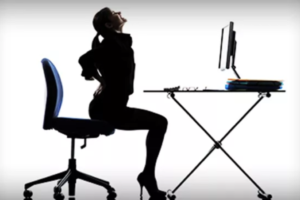
Take into consideration the multi-million dollar business or ergonomics.
Now while I will agree with some of the products out there many have no benefit to the general consumer and simply utilize that term for marketing and advertising to increase sales.
That being said what should we do?
Well following many of the recommendation from up above we need to consider the directional preferences of you pain and which positions feel better and which positions feel worse.
Simply put, try to do more of the good and less of the ouchy bad.
Easier said than done right.
So what might we do?
Use some tools to help you remain in the positions and postures as well as reduce the muscular activity needed to perform them to allow for longer times in those positions.
Then add micro-breaks, if you sit for a job I want you up and our of your chair moving for at a minimum 1-2 minutes every 20-30 minutes!!!
Tools to help:
- Yoga wedge to sit on and roll pelvis in ideal position
- Rolled up towel to sit on and roll pelvis
- Sit at the front of the chair and roll pelvis
- Stability/Yoga Ball
- Sit all the way back in the chair and use a lumbar support
Just as we stated above this allows you to take a commonly painful activity, such as sitting, and reduce the sensitivity that is imposed on the back to allow the feed-forward loop we are trying to initiate to take place. Keep in mind this is more directed towards if you are actively having back pain and sitting flares you up.
Those that might be experiencing back pain from sitting might just need to get up and move. Pain does not equal harm, and the discomfort you are experiencing more likely than not is simply a trigger to get you ass up and moving!
9. You won’t be able to play or pick up your kids or grandkids
As a parent now I can confidently say this one is tough. And I myself have had an episode where my back locked up on me and it was very challenging to help around this house, help with the kids, and really do much of anything.
But I trusted to process and from not being able to walk to the bathroom or put pants on very well, a week later I was deadlifting from the ground again building up my foundation.
Now, this all comes back to building resiliency and expanding our foundational base.
We know that a pyramid height is controlled by the based.
If we are able to expand our foundational support we will not only have a better platform for future progress, we will also find that we do not fall that far when we have a setback.
Whereas we can compare this to an individual that is deconditioned or elderly, when they have a fall or set back it will significantly affect their quality of life as well as their ability to recover.
So we need to build the base!!
Raise the floor! -Craig Leibenson
This is again especially crucial for the populations described in the myth if you want to be ready and able for your children or grandchildren the best thing you can do is become more resilient, expand your foundational movement base, learn new tasks that challenge balance, strength, and readiness.
SCHEDULE NOW IN OFFICE OR FOR A TELEHEALTH SESSION TO DISCUSS YOUR LOW BACK PAIN
10. You will always have to do your back exercises
The exercises that you will be guided on will always be progressive.
Keep in mind a deadlift is a back exercise, so… we might encourage you to do deadlifts for the rest of your life.
Spoiler alert!! Deadlifts do not hurt your back! In fact, they make them stronger and better if done correctly.
So yes, in this case, you might always have to do your back exercises, but at the same time the previous exercises that were given in your acute phase or your building phase will eventually fade out as your progress.
Now I still do mine from time to time to check back in and look for any deficiencies or to brush up on some activation and foundational principles. Again getting good at the basics take you a long way.
What if instead of thinking I always need to do these so that I do not have pain, we rephrase it as I do these back exercises to continue to be strong!
Are we simply doing things to not suck or doing things to be better!
I would rather look forward than dwell on where I have been. Trust the process, do the basics well and allow your foundation to support you!
6 Truths About How To Stop Back Pain
1. Your back is strong
There are a number of different publications that dive deep into the exact amount of load tolerances the spine can withstand. And without going into specific numbers, we can still confidently state that our backs are crazy strong!
Now it must be said that some backs are stronger than others and why this is the case. But if you look to see what some humans are capable of whether it is feats of strength in competition or feats in strength unknowingly to save of life our bodies can do some amazing thing.
We have all seen on the amazing world wide web awesome pictures of individuals in their 80’s lifting crazy amounts of weights, and you think, what the hell? How can they do this? How is this not crippling them?
Strength is inherent in us due to our structural makeup, but it is also something that is developed. So although you might not feel it now, it is 100% possible to achieve it!
But it is more common that we will put a rate-limiting factor on our capabilities due to worry, frustration, or pain. Which I will add is completing natural and common.
Our role as a provider is to highlight a path that allows you to freely determine just how strong you are. The stronger you feel, the more strength you will exhibit, and low and behold, you body will start to adapt and become yet more resilient and robust.
All of a sudden you are in the amazing feed-forward loop of strength and resiliency.
But I understand in reading this if you are in pain you might not feel this way or imagine that this is a possibility, and that is why you need someone in your corner. If not yourself then let it be us!
We will show you the way to a better stronger life!
SCHEDULE NOW IN OFFICE OR FOR A TELEHEALTH SESSION TO DISCUSS YOUR LOW BACK PAIN
2. Movement will help
“Motion is lotion”
“Rest is rust”
There are a number of different phrases that hammer at this point that movement is key!
“If you are not moving then you are losing”
Why is it important?
Well, you see our bodies are very good at being efficient. And when it starts to realize that you are not moving enough, it oddly becomes better at not moving. And if you get better at not moving, well then you are pretty much stuck.
But if you start to move, then your body becomes better at moving, and the more you can move despite having a little bit of pain then your body will start to put the pieces together that:
“I am moving and I am moving with minimal pain”
“Then I must not be as beat up or hurt as I thought originally”
“I should try this other thing that hurt and see how it feels”
The movement investigation provides your body with a frame of reference to a map of the areas that are good to go and not good to go.
Your go no gos! Are simply put on the back burners
But everything else is fair game and now you can start to live your life again knowing and having a better understanding of you pain patterns and movement behaviors around your pain!
This is the most empowering thing for an individual in pain.
The fact that you can control if you are in pain or not based on what movements you do will simply speed up the recovery process and make you more resilient and empowered when it comes to pain management!
3. Sex can still be enjoyable
Due to the dynamic nature of the activity, many individuals struggling with lower back pain often will report the difficulty in connecting with their significant other. At first glance, especially if you have not experienced this type of pain to the level that would create this friction you might not have experienced how frustrating this would be on an individual and their relationship with their significant other.
How do we fix this to keep the spark alive!
Well, if you have made it this far you will gather that we will probably start by determining what movements or positions hurt and what feels better. World leader in spinal biomechanics, Dr. Stuart McGIll, has provided a reference list for individuals to use to better help them navigate what positions might prove to be more beneficial for individuals.
Having this knowledge will be extremely beneficial for you and your partner, as well as helping you continue on the path of recovery with reduces instances of flare-ups or pain bouts.
Understanding back pain can be very complex and what we know about it presents differently for everyone. But what we do know is that the old mentality is not servings us well and a new paradigm shift is happening, where people know they do not want to be reliant on medications and they definitely do not want to have surgery if they can do something about it. We have something you can do about it and trusting the process with a plan will be extremely rewarding to you.
This is not just about getting out of pain this is also about getting back your life. Being able to connect with your significant other has more benefits than nearly everything we have discussed. The relationships between your family and your friends will be strengthened.
Tracking process does not only mean less pain, sometimes it means we can do more with the same amount of discomfort or that it does not make it necessarily worse. So you if can apply this knowledge to do more activities that you enjoy with either the same amount of discomfort (more resiliency) or less discomfort (consistent improvement) then we are on the right path for recovery!
If you feel that your relationships are struggling as a result of the pain you have been experiencing please reach out to us today. We are able to provide you hope and benefit in the office or through telecommunications methods. We will find a way to help!
SCHEDULE NOW IN OFFICE OR FOR A TELEHEALTH SESSION TO DISCUSS YOUR LOW BACK PAIN
4. Let your body heal and it will
“Stop picking at it!”
We have all heard this at some point in our lives. Humans being the curious creatures that we are, seem to always be messing with our pain and picking at it.
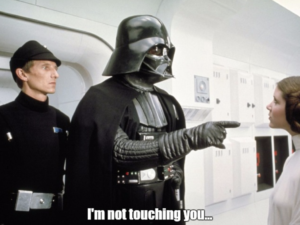
Now that being said, we must understand that letting your body do what it needs to do does not mean sit around and wait.
Consider that much of your pain might be coming from compensation patterns or overly guarded muscles in the absence of tissue damage, especially if you had had pain for some period of time.
More importantly, we are referring to when we have a flare-up or acute pain we must map out the positions that are aggravating our symptoms. These movements, positions, activities, or behaviors are essentially just picking at the scab that is trying to heal itself. If you are able to modify these behaviors and movements temporarily you will allow the process to run its course. You can still move and be active we are just walking around a certain area for a certain period of time. As the sensitivity reduces then we introduce those back in with a systematic process that encourages self-advocacy and confidence!
More confidence = less pain = more movement = more confidence
We switch out of a negative feedback loop into a positive reinforcement loop.
Many of us will naturally do this, but we get stuck in the process of letting things “heal” and we do not progress. We fear to move and fear the slightest bit of pain thinking we are making things worse or not letting it heal.
Keep in mind that pain does not equal harm. Often this is simply and alarm system that triggers us to be cautious with whatever we are doing to prevent us from doing something more.
5. Auditing your lifestyle and what is important will help you understand how to stop back pain
This one might hit some of you a little harder.
Now when I say audit I simply mean taking a step back and gaining a better understanding of where you are, where you want to be, and what you are doing to get there. Sometimes we want certain things but we are not doing the right things to get there, or we are trying to make up and doing too much.
There are various different ways in which this could play out but hopefully, you can get a sense of what we are trying to go after here.
For instance, if you want to be healthy and have strong joints that go move well and not be painful, the Olympic lifts that you are doing in your fitness class might not be the best choice of movements to be performing. So when we say audit it comes down to many different factors.
Now for many of us, this statement is also true when we audit how much we are not moving throughout the day. Sedentarism is slowly rusting us away and aging us faster than our chronological age is. We are living longer and unhealthier.
So we integrate, we know there are things that might not be able to change 180 degrees in your life but if we can integrate some better habits for you back and your body you will start to feel more energized and not drained by your pain, your confidence will go up encouraging you to participate in more activities that you enjoy, and your overall lifestyle improves. Small consistent alterations can have a huge impact.
Breath | Move | Live
Ha, easier said than done right! You do not have to go at this alone ya know! We can help you create achievable, actionable steps so that this process is more streamlined ensuring your success.
6. Deadlifts are good for your back
We will finish with a bang here because for many of you out there you might have been told by a provider that you should ever deadlift lift that it is bad for you back, or you have been scared to perform anything like this because you suffered from a back pain episode following a deadlift movement.
Well, spoiler alert! You deadlifting or hip hinging every day to some capacity whether you are picking something off the ground, leaning forward and balancing, or unloading the dishwasher so this is important.
Now it must be said before we dive into the conversation that spinal flexion is normal and should be encouraged and performed. By preventing spinal flexion with everything that we do we are splinting one of the most important ranges of motion in our bodies that will be challenging to restore. When we encourage hip hinging/deadlifts we put it on a spectrum.
Certain movements will look similar to a hip hinge but have obvious spinal flexion, this might be something like picking up your keys off of the ground or petting the dog, low level of complexity and obvious low loading. On the other end of the spectrum is a heavy barbell deadlift that would require absolute perfect form and technique to reduce spinal flexion especially under load.
Everything else falls in the middle, which means we need to train on the left, to the far right, and in the middle. Creating a movement awareness model in your mind makes you more prepared for anything position, shape, or situation you are thrown into.
With that being said though, we will be encouraging weight hip hinging also known as deadlift! They are actually and arguably the best thing that you can be doing for you back!
Now if they hurt your back you are doing something wrong.
But!
If I can get you to deadlift a weight that is challenging for you or that you have not done before in the past and you can do it well without any pain we could probably argue that your back is ok and it is not broken. In fact, we could argue that your back is strong, and whatever doesn’t break us down will only make us stronger, and if you are stronger you can withstand more without getting hurt, and if you can withstand more without getting hurt you can do more and serve more and be more!
So all in all deadlifts save lives!!
But really this movement is one of the basic human movement patterns and strengthening it will encourage better movement patterns and strength that can be utilized when needed without any fear of getting hurt.
Conclusion
Hopefully, you were able to take away one piece of valuable information that will help you better learn how to stop back pain.
Our role is to help challenge you to create hope for the future and actionable steps for your success.
Invest in yourself and your future today right now. Wasting time only delays what you already know and that is change needs to happen. Take the first step to owning up to the pain and changing your future today!
There are many elements to back pain and in no way are we saying that it is as simple as we have laid out above for everyone. But I hope you have a little more confidence that what you are experiencing can be normal, and that there is a way to find comfort and conquer the pain that you are experiencing.
This article is intended to give you insight into the many elements of back pain while demonstrating the faults or myths around back pain and some encouraging points directed towards getting over back pain. If you have additional questions you can always reach me at 303-717-6323. We do not want anyone to be suffering and if there is anything that we can do to help or any value in which we can provide, we will do it!
So please reach out and let us help you get over this!!
Severe Non-Operative Disc Herniation Case Study
Severe Non-Operative Disc Herniation Case Study
The advancements in medical knowledge and interventions are at an all time high these days! Which is absolutely amazing and fantastic. But at the same time in this information age how do you ascertain what is the best route you should take for various medical conditions, illnesses, or injuries?
It depends.
I wish things were more black and white when it comes to medical intervention, and for some issues and conditions the lines are definitely a little more definitive. But for the most part everything is open to interpretation.
BUT!!! The most important thing to remember is that you have a say! It is your body and you need to advocate for yourself about what you feel comfortable and understand, so ask the questions!
You may find yourself asking right now, “Why is he yelling at me?”
No yelling just a strong emphasis to be speak up because I have a story to share with you about a patient that did speak up (figuratively) by asking questions and making a decision based on the facts.
What comes to mind when you hear the phrase, lumbar disc herniation?
Before and even partially during my training and postgraduate education even I thought:
- Extreme pain
- Leg weakness
- Numbness and burning pain
- Back surgery
You are not wrong if these thoughts come to mind, but keep it mind it is a gray area.
Does everyone who has a disc herniation experience these pain cycles or interventions? NO!
Do people have surgery without these symptoms? Sometimes.
Signs that you should seek orthopedic evaluations:
- Progressive neurological symptoms or worsening of symptoms. This is usually seen or described as the pain is traveling further down the leg and the intensity has been progressively getting worse.
- Progressive muscle weakness. Often times there is some minor motor weakness associated with disc herniations, if this progress further assessment and evaluations should be explored.
Lastly if you are experiencing any sign of what is known as cauda equina syndrome or saddle paresthesia or symptoms, please seek out immediate medical attention at your local urgent care or ER and let them know what is explicitly going on. This is no time for prudeness explain all the symptoms you may be having below the belt.
Jessica’s Story
Jessica was referred to our office for lower back pain that began just after she had given birth to her son Geoff. The pain was almost felt immediately after birth once the adrenaline and hormones leveled out. She was managing being a new mother well with nursing and the 1,000 other things that are involved, but her lower back pain was persistent and at times very painful.
Jessica’s pain was worse after prolonged sitting, and as a new mother picking up nursing for the first time with cluster feeds and all, you may find yourself sitting for some time. This pain began to progress and turn into some additional hip tightness and mild burning pain in the hip. Soon waking up in the morning began painfully and getting dressed and putting on socks and shoes turned into sweats and sandals.
After our detailed evaluation and exam, we believed that there was some degree of disc irritation present. Although we did not have an MRI to confirm we would treat it as such with our disc protocols and training the patient how to hinge at the hips properly and manage the loading of the lower back in addition to her postpartum rehab exercises to rebuild the core. Her progress and pain had been doing very well to the point where she decided to reduce the frequency of her home care and lost some of the training principles we discussed in regards to hinging and picking up the baby, etc.
Needless to say, Jessica’s pain started to return and was a little more aggressive this time around. One morning she was getting up off the ground with her son and started to feel some mild numbness and pain in the saddle region of her pelvis. (Think of the area of your body that would be touching a saddle when riding a horse, yeah this is a do take chances kind of area)
Jessica reached out to her PCP and was able to get in with an orthopedic doctor 2 days later, and then reached out to us after the appointment. They performed an immediate MRI that revealed a L5/S1 disc sequestration that was putting pressure on the nerves. They prescribed a steroid pack to help reduce the inflammation to prevent further pressure. Now a disc sequestration is when the disc completely opens as an opposed to just bulging out. This can actually cause more progressive symptoms but in some regard, this can actually start a quicker healing process compared to standard disc bulges.
** It must be stated that this is a scenario that immediately needs to be brought to an orthopedic surgeon attention**
While being managed by the orthopedic doctor Jessica was inquisitive and began asking as many questions as she could. Our discussions pointed out that there have been positive outcomes without doing surgery if symptoms do not progress and the that the body will eventually reabsorb the disc material that has been pushed from within the disc.
The orthopedic surgeon stated that if she would have come in a day earlier he would have recommended an emergency surgery based on her symptoms, but a day later Jessica came in and now indicating she wanted to wait to see if symptoms progress she is able to hold off on what would have been an “emergency surgery”.
Continuing to manage inflammation and reduce pressure on the disc with movement-based principles. Jessica’s symptoms slowly began to subside and reduce as time went on. Her saddle numbness was still present but pain was down, and slowly the radius of the numb area was dropping as well. One day Jessica reached out to us stated that all of her symptoms have returned back to normal.
This can be a very serious issue if not managed properly, evaluate and explore what you are feeling to give your provider the best insight as to what is going on and ask for alternative therapies if that is something that you are interested in. There are times when symptoms include the listed provided above as well as other progressive symptoms that involve bowel and bladder symptoms where one should NOT wait to seek medical attention.
Conclusion
The take-home message here is there are multiple roads to Rome. Often times the recommended intervention might be too invasive or extensive for what you were hoping to do, so explore your options and ask your providers questions. In this case, the patient was fortunate enough to not have her symptoms progress and she was able to rehab and get back to leading an active life with her toddler without going through surgery for an extensive disc herniation or sequestration.
This again is one of the more extreme cases to show one end of the spectrum, if you are diagnosed with a disc herniation or bulge and you might have symptoms that are down your leg without progressive motor loss or progressive neurological conditions you are most likely able to return and rehab without undergoing any surgery.
If you are unsure whether or not you are in a position to continue down more conservative options and/or you are concerned about going down more invasive protocols please reach out to us and we would be happy to discuss your options!
Do You Need X-rays to See a Chiropractor?
Do You Need X-rays to See a Chiropractor?
X-rays are common practice for many practitioners in the chiropractic profession.
It is an amazing service that can help catch diseases and pathologies, it can be very helpful when looking for fractures, and it is fairly cost-effective for most situations.
But when does it begin to become an issue when everyone and their mothers are being put under X-rays when they go to the chiropractor?
We are going to be making this article very brief and to the point.
X-rays can be beneficial when necessary. Your providers that you are going to, that are relying on X-rays to treat you, are making you pay for unnecessary costs that will most likely not help your pain.
The American Chiropractic Association Has 5 Recommendations:
- In the absence of red flags, do not obtain spinal imaging (X-rays) for patients with acute low-back pain during the six weeks after the onset of pain.
- Do not perform repeat spinal imaging to monitor patients’ progress.
- Avoid prolonged or ongoing use of passive or palliative physical therapy treatments (such as heat, cold, electrical stimulation and ultrasound) for low-back pain unless they support the goal(s) of an active treatment plan.
- Do not provide long-term pain management without psychosocial screening or assessment for possible related psychological disorders, most notably depression and anxiety.
- Do not prescribe lumbar supports or braces for the long-term treatment or prevention of low-back pain.
How X-Rays Are Typically Used by Your Providers:
- X-rays to determine where to adjust
- X-rays used to scare people into prolonged treatment plans
- X-rays to monitor progress through the awfully long plans
- X-rays used to determine if the treatment plan got results
- X-rays used for additional ammunition to continue care if we did not see changes we wanted
Here are some fleeting thoughts for you all…
If your chiropractor needs X-rays to determine where to adjust, how do they know where to touch you if they are relying on the image to see where to go?
Perhaps putting your trust and investing your time, money, and efforts will be better spent on methods that will not rob you of your power and health!
Our skilled providers can easily manage and evaluate where to provide intervention without the need for X-rays and you typically get better results faster. Our focus is on you not what some snapshot image says about you.
Keep up the great work and LIVE LOUD!
Share with a friend or loved one.
How To Heal a Bulging Disc
Bulging Disc: How to Heal Low Back Pain Naturally & Make a Comeback
When it comes to understanding bulging disc, herniated disc, and other disc injuries that cause back pain, there are some nuances that’ll make it easier for you to heal naturally and make a comeback.
This is Dr. Antonio with Live Loud Chiropractic & Coaching in Lafayette, Colorado. Today, we’re going to cover exactly what bulging discs and herniated discs are and how they cause back pain. Most importantly, we’re going to cover how you can protect yourself from disc injury and what you can do about it if you’re already in pain from a bulging or herniated disc. If you have back pain or you’ve been told you have a disc injury, this blog will be especially useful for you.
PLAY VIDEO ⬇︎
What Are Discs and Vertebral Bodies?
When we’re talking about bulging or herniated disc, it’s not a black or white issue. So first you need to understand certain functions, how certain body parts move and operate, so you better understand your injury. The best way you can do that is by having a proper one-on-one evaluation, but this blog is going to help you immensely in the meantime.
To begin, the disc is what resides in between two vertebral bodies. The vertebral bodies form a column. The spinal cord goes down the middle of that column. It’s protected on the backside by the spinous processes, which is the spine that you can actually feel on your back. And then on the front side are those vertebral bodies. And those vertebral bodies stack up really nice like a column. And that column is what gives structural support to your spine. So when looking at the vertebral bodies, the discs are in the middle of them.
You also have nerve roots that come out from between two vertebral bodies. The nerve roots are what go out to your body, to your trunk, your digestive system, your extremities, so on and so forth to every inch of your body. They direct motor function, carrying signals going out that tell your body to do certain things. They also bring in information to the spinal cord and up to the brain.
You can think of the disc in between as the shock absorbers or the compression component of the spine, as it sits in between those two vertebral bodies. Now, it’s a very strong structure, but it can heal just like any other soft tissue. This foundational information will help you understand how to fix back pain from a disc bulge or herniation.
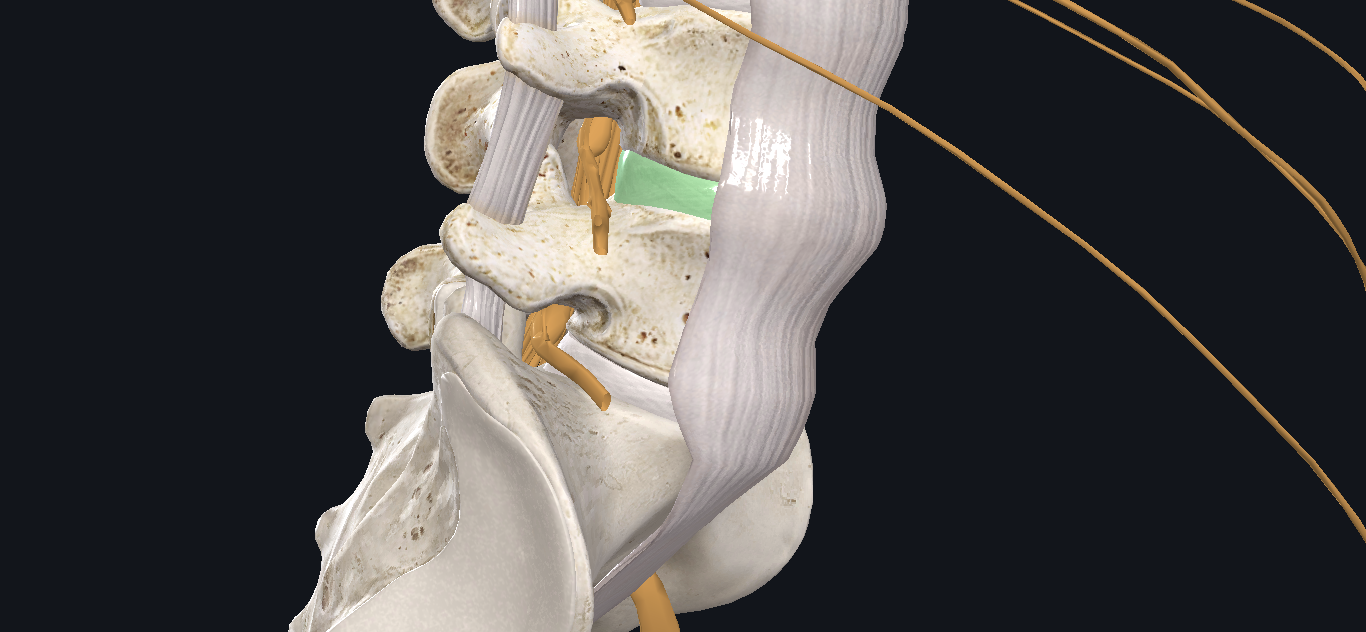
What Are Intervertebral Discs Made Up Of?
To better understand how a bulging disc happens, it’s important to know how the disc is made up. I want you to think of a tree trunk. If you look at an old tree trunk, you can see the rings, and the rings give you an indication of how old the tree is. But in the case of discs, the rings are called the annulus.
In a disc, looking from the top down, you’re going to have all these layers of rings that go from the inside and get bigger and bigger and bigger as they go around the outside. From the sides, you can imagine those rings lining up. But then the rings will also interchange and be at different angles going across each other.
So it creates this network or matrix of these annular rings that come together and can withstand a lot of great compressions. It also helps deflect twisting and rotational forces known as distraction forces. So any sort of force that goes into the disk is absorbed by this network and fiber of webs that pulls and compresses to make it very strong.
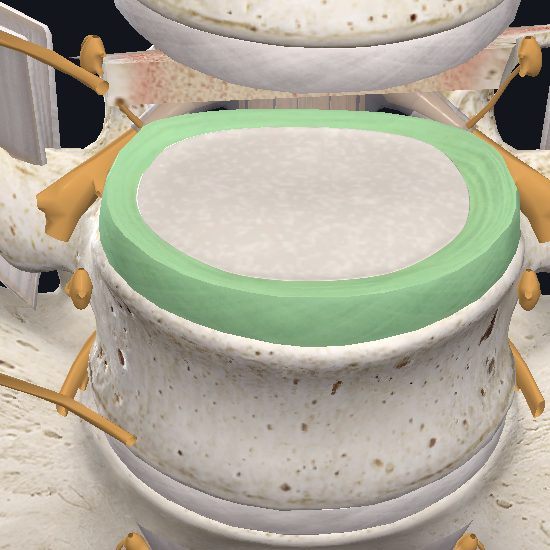
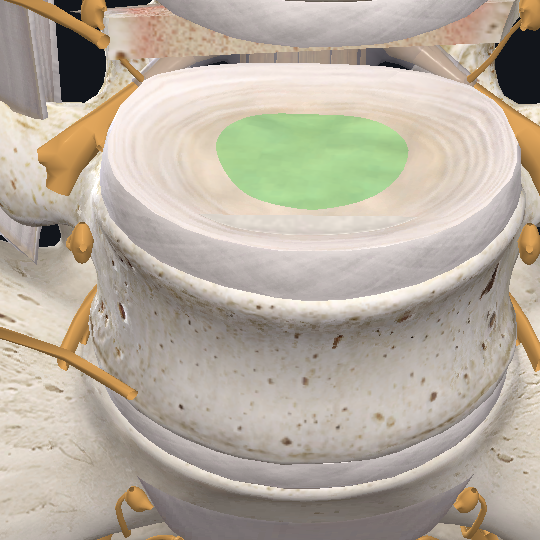
How Do Repetitive Movements Cause Annular Tears?
Now what happens in our day-to-day life is that you tend to do what we call repetitive movements or repetitive behaviors. So, for instance, if you work at a desk, you’re doing a lot of the same positions or movements. If you’re doing any sort of weightlifting or CrossFit or HIIT or even just working out in general, you commonly are doing the exact same motions over and over.
And if a formed technique or another number of factors that can happen begin to build up, then that same repetitive movement pattern wears on those annular rings. And you can get what’s called an annular tear. That’s the beginning of what leads to disc bulges and disc herniations.
Now, depending on the extent of the annular tear, you might not have a true bulge or herniation. You might just have symptoms from the annular tear, depending on where it’s located on the disc. There are three different regions of the disc:
- Middle
- Outer: The outer third of the disc where the actual pain fibers are
- Inner Nucleus: Fluid-filled center
If you have an annular tear without a bulge and you have pain, we do know that that annular tear is probably progressing or migrating towards that outer level.
How Does a Disc Bulge or Herniation Happen?
When talking about how disc bulge or herniation happens, force and pressure are important. Think of the nucleus of the disc as a jelly-filled donut. As you move, that nucleus is going to shift and migrate depending on where the forces are. It’s like a waterbed. If you push on one side of a waterbed, where does the pressure inside the waterbed go? It goes away from you.
That’s really important when we’re looking at disc injuries, herniations, and bulges because we want to know where the force is coming from and where the pressure is going. If you have an annular tear on the outside of the disc, for example, straight compressive forces might be fine.
But we do know from research that the compressive forces within the disc are higher when you’re sitting. And that pressure increases depending on how you’re sitting. As you start to flex forward, for example, the pressure pushes backwards. If you have an annular tear impacted by repeated compression, you’re going to start to see that disk swell into and push through that tear, creating a bulge or bubble on the backside of that disc.
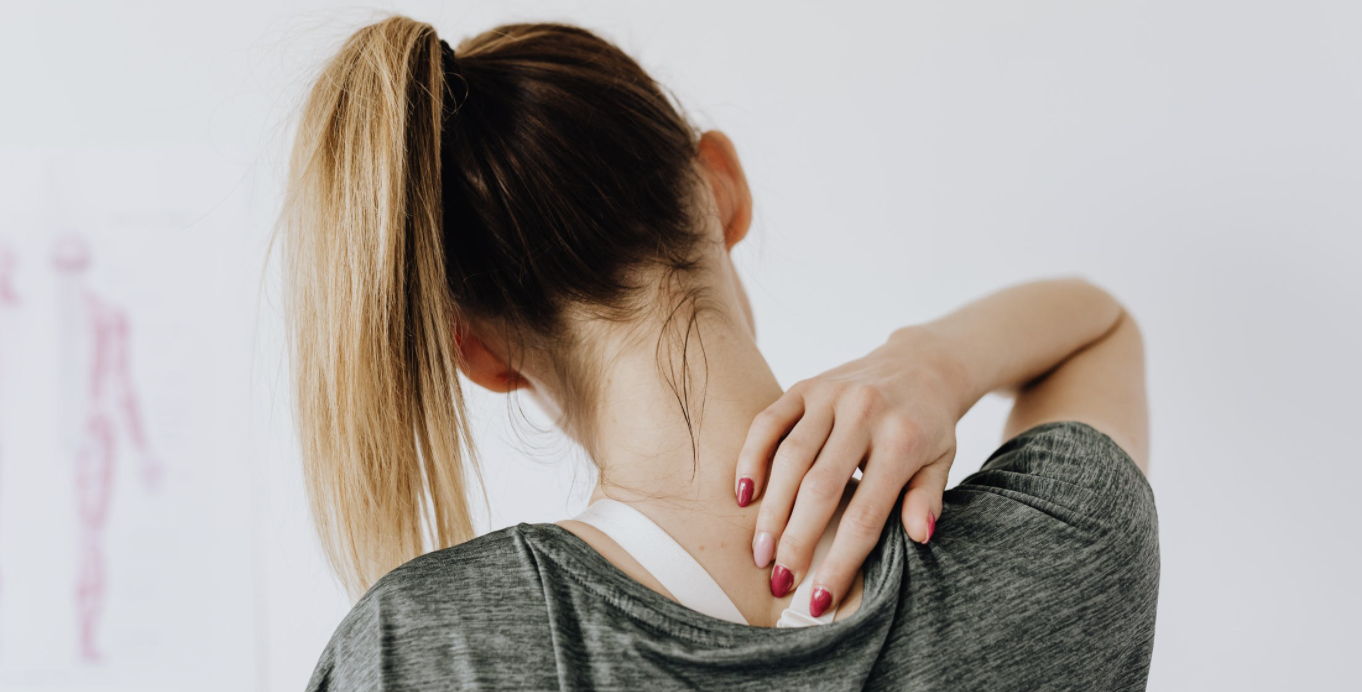
How Does a Disc Bulge Cause a Pinched Nerve?
The bulging disc can actually push back into the spinal column. And depending on how that bulge pushes out, it might be bulging enough to where it puts pressure on a nerve root.
This is where you might get symptoms of sciatica down your leg. You might be feeling numbness or tingling. You might have a little bit of motor weakness or motor loss. Those would all be signs of a true pinched nerve. Oftentimes, when people get nervy pain, they refer to it as a pinched nerve, which may or may not be the case. But this would be an actual pinched nerve.
When your body starts to realize you’re getting this bulge, it’s going to activate the immune system in response to injury. This is going to bring a lot of localized inflammation to help clean up any debris left as a result of the injury, and you’re going to get more localized swelling. That swelling might put additional pressure on that nerve root.
So the pinched nerve might be the byproduct of the swelling in response to the injury, or it could be the disc bulge itself. All are important considerations when dealing with and rehabbing the injury.
Best Movements for Bulging Disc
There are certain movements that help with a bulging disc. To start, it can sometimes be helpful to use a steroid pack to reduce that localized inflammation. This provides you a lot of symptom relief and opens up a window of opportunity for you to do rehab care and movements. This supplements the treatment plan if you’re having a little bit of trouble gaining traction in your recovery.
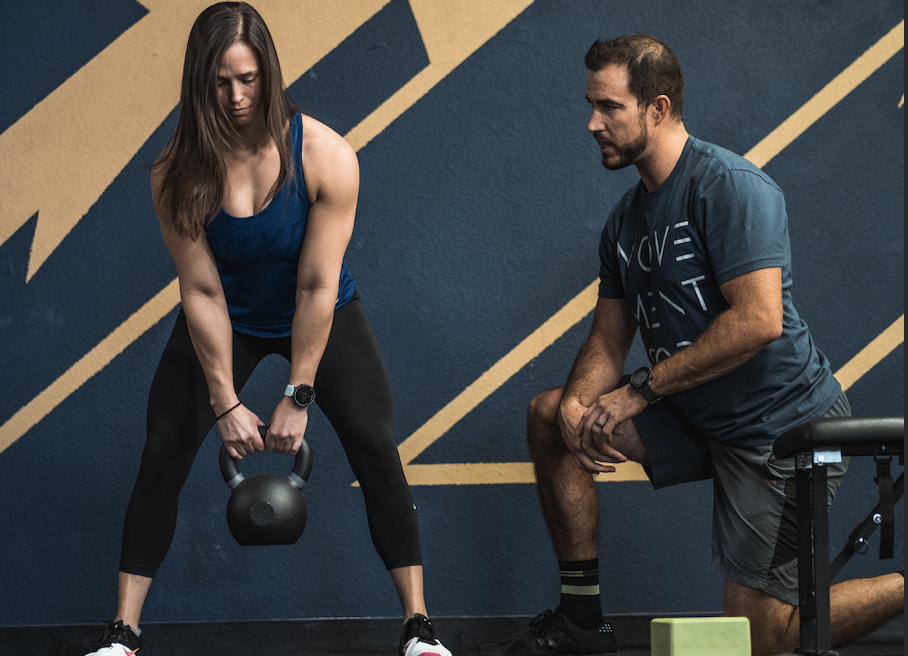
McKenzie Exercises and Extension Based Movements
One of the best exercises for bulging disc is called the McKenzie extension. If you have a bulge putting pressure on the front side, for example, will push the bulge backwards. With the McKenzie or Extension based movements, you put pressure on the backside of the disc by going through an extension movement. This will actually put pressure into the back of the disk, helping to reduce that bulge or herniation as it migrates forward. This is why we use a lot of hip drops in our office.
Mindful Movements for Bulging Disc
The other thing you need to consider is how you’re moving throughout the day. Let’s say, for instance, you’re unloading the dishwasher. If you’re not hinging through your hip joint, you might add more flexion in your spine and put more pressure and bulging in that disc.
If you’re being super-mindful about how you’re moving, but then do something a little more careless by flexing your spine forward, it’s like having a cut on your knuckle that you’re trying to heal but then grab something so that scab cracks because it’s right at that flex point. And so it makes it very hard to heal that injury when it keeps moving.
This might be a time when you need to put a splint on your finger to not allow it to move so that scab can heal. The same holds true for this disc bulge or herniation. That annular tear can take a little bit longer to heal due to the nature of the blood flow and nutrient supply that it gets, but given time and careful movement, it can heal like other soft tissue injuries.
What commonly happens, though, when most people go through lower back injuries, disc herniations, and bulges is that they’re not focused on the preventative side other than just rest and don’t do anything. They might do some exercises, but they’re really just hoping it will heal with rest. What most people don’t realize is that the positions or motions they’re doing on a daily basis, activities of daily living such as unloading the dishwasher, picking up a bag of dog food, leaning over to wash your face or brush your teeth, are all opportunities in which you can help the healing process or hurt the healing process by scratching that scab that’s trying to heal.
Hip Hinging for Bulging or Herniated Disc
Properly hinging at the hip instead of flexing the spine is one of the best preventative movements for bulging or herniated discs. Your hip joint is a big ball. It’s a big greasy ball and socket joint. It’s really good at providing movement.
The spine, on the other hand, can move and is really good at flexing, but it depends on the load and the context of the task at hand. When you’re picking up something heavy or bending forward, you need to hinge better through the hip to reduce the load on the disk. This way the spine isn’t flexing and bending all that much. Instead, there’s a pivoting around the ball and socket of the hip, allowing the back to remain straight.
Hip hinging is a prime opportunity for you to keep doing all the things that you need to do, especially if you’re a parent, have a very active lifestyle, or just want to continue the activities you enjoy such as gardening. This movement allows you to stay active without continuing to irritate the disc injury and disc you’re trying to protect.
Prevention Goes a Long Way for Bulging Discs
These preventative measures are one of the most critical factors when trying to get over disc bulges and herniations. The way you develop a condition is commonly how you get out of it. So if you have poor movement mechanics from exercising or lifting at work, for example, then you need to be mindful about those things so that you can let the disc heal while also staying active. You also need to know these mindful preventative movements are what you need to work on going forward so you don’t reinjure the disc.
Again, disc bulges and herniations can and do heal. They often just need a little bit more time and effort. Most don’t know to make the necessary changes to their movement patterns. And they just keep irritating the disc. That’s why healing can get super frustrating. You think…Oh, it’s been a couple months and I’m not seeing any progress or things are getting worse.
If this is you, take a step back. You’re just forgetting that you have to be mindful of those movements patterns. Almost everyone sees some disc bulging or herniation from time to time. It can’t be avoided completely. But when you do get that little bit of pain, it’s an indication that the movements or activities you’re doing are causing too much disc loading and pressure.
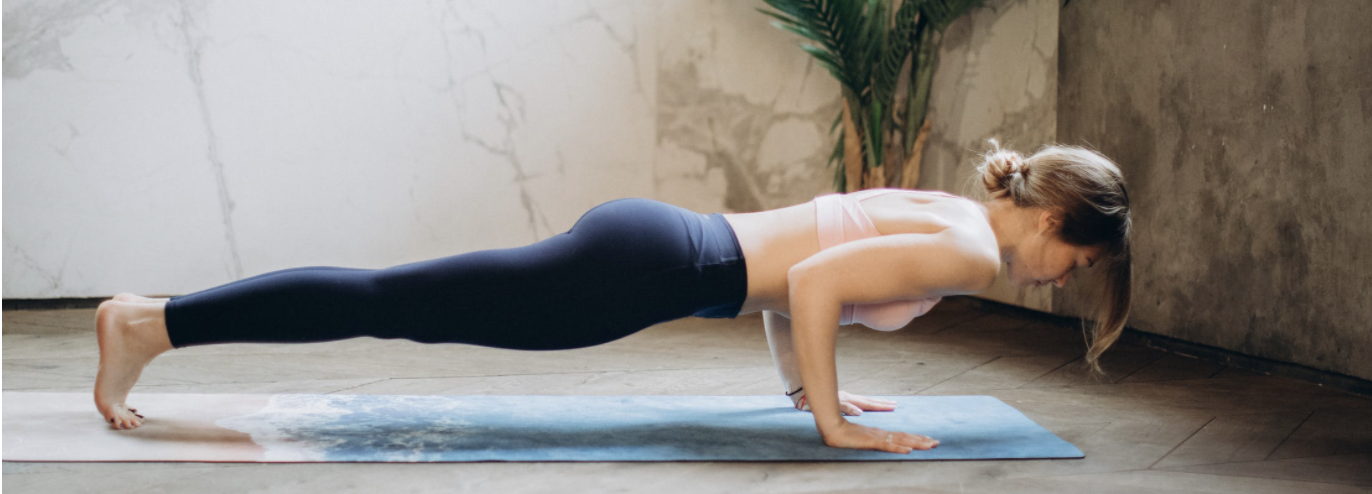
Muscle Guarding With Bulging Discs
Now the last thing you’ll want to consider is, oftentimes, a lot of the pain you might be experiencing is the muscle guarding intention that comes as a byproduct.
It is very rare that you will actually strain a big, thick hearty muscle such as the QL. Yes, it’s possible when doing a lot of the movements that trigger or exacerbate lower back pain. But what we often at Live Loud Chiropractic headquarters in Lafayette is that pain is a byproduct in muscle guarding the nerves or the discs.
When you start doing a lot of activities or repetitive movement patterns that constantly irritate those structures, your body is going to say…This does not feel good. I need to lock it up and protect it so that things don’t get worse. And then you get a lot of lower back tension or tightness or spasms or guarding.
Imagine if I asked you to hold your bicep and squeeze it really tight. How would that bicep feel after a couple minutes, hours, days, or even a couple weeks? It’s going to start burning. It’s going to hurt because it’s constantly in the contracted state. When muscles are contracted, they also squeeze arteries and vessels that go through them and supply them with nutrients and oxygen. So the muscle starts to burn even more because it’s in a hypoxic state, and it’s not getting the actual nutrients and oxygen it needs.
The Feed-Forward Mechanism in Naturally Healing Disc Bulging
Now the last thing you’ll want to consider is, oftentimes, a lot of the pain you might be experiencing is the muscle guarding intention that comes as a byproduct.
It is very rare that you will actually strain a big, thick hearty muscle such as the QL. Yes, it’s possible when doing a lot of the movements that trigger or exacerbate lower back pain. But what we often at Live Loud Chiropractic headquarters in Lafayette is that pain is a byproduct in muscle guarding the nerves or the discs.
When you start doing a lot of activities or repetitive movement patterns that constantly irritate those structures, your body is going to say…This does not feel good. I need to lock it up and protect it so that things don’t get worse. And then you get a lot of lower back tension or tightness or spasms or guarding.
It’s important for you to find opportunities that allow the muscles that are guarding and protecting to calm down and relax in order to help the healing process. The more those muscles calm down and relax, the more you’re able to move. And the more you’re able to move, the more blood flow can get in to heal the area.
This will also allow you to realize that certain movements are actually feeling good.This is called a “feed-forward mechanism” or a “snowballing effect.” If you can get rolling in the right direction and gain some momentum, then, commonly, you’re going to keep that momentum going forward in a good way.
The Negative Feedback Loop In Naturally Healing Disc Bulging
The same is also true, though, when you start irritating it. If you’re not being conscious about the movements that irritated it in the first place or that cause more pressure on the disk, then you start having a negative feedback loop. The more pain you feel, the more pain you’re going to experience. And then the more pain you’re in, the more you’re going to become sensitized. Until you get to the point that any little movement or anything out of the norm is going to set you off and trigger more pain.
This is very common for a lot of chronic pain individuals. They just see this bouncing from…I’m good for a little bit, but then I get really bad. And then I feel a little better because I don’t do anything. And then I get really bad. They’re constantly in this flip-flop mode of too hot, too cold, too hot, too cold. In these cases, we really need to dive deep to discover what exact movements and activities irritate it, which it going to be different for everybody.
Making a Comeback after Disc Bulging, Herniation, and Injury
The biggest takeaway is that you need to find opportunities that allow you to move and keep moving. You need to look at the ways you can work on muscle tension and how you can move better. You should look at the ways you’re doing your exercise classes, your training, or working out at the gym. Those repetitive movements are all really important pieces of the puzzle. But there is not a one-size-fits-all approach. It has to be tailored for your body.
We do see a theme, though, with disc herniation and bulges. For many people, it’s that bending forward and flexing forward that tends to trigger them the most. So we have a couple of starting points that work really well.
First, if you have nerve pain or signals or symptoms, don’t just assume you need drugs or surgery. Movements and decompression are also very, very valuable. You just need to know the right exercises to do, and McKenzie extensions and hip hinges are a great place to start.
Next, if you are suffering from disc injury or you’ve been told you have a disc herniation bulge, do not write this off as a death sentence. There are a lot of things you can do. Your disc can heal itself. And even if it doesn’t do that completely, there are additional exercises to continue to strengthen your core and your hips. These can help stabilize and make your back stronger and more robust, which might have been the reason a disc injury happened in the first place.
Finally, if you have experienced disc injury, you know how tough it is. I hope this information helps boost your confidence while recovering from injury as well as preventing re-injury if you tend to have recurrent back pain episodes. And if you know of someone who’s dealing with a disc injury, please share this information with them.
Conclusion
Unfortunately, many of these things are not being taught by medical providers, orthopedics, or physiatrists. Even physical therapists are sweeping some of this under the rug, asserting that these basic movement changes don’t work. But they do. Now you understand how the discs work and can ask the right questions to figure out the right path for you to heal and get on with the adventurous life you are made for.
We’d love to hear your bulging disc or disc herniation questions and experiences. Comment below to tell us what has or hasn’t worked for your disc injuries.
Fixing Sciatic Nerve Pain
Fixing Sciatic Nerve Pain With 3 Easy Exercises
If you’ve ever suffered from sciatica, or pain that maybe runs from your back down into your legs, or you know someone who’s been through this before, you’ve seen how rough it can be, and this blog is going to be very valuable for you.
*Disclaimer this post is for educational purposes, consult with a clinician to determine the best course of care and movements for your pain, or reach out to us for a consult*
Today, we’re going to show you three basic exercises that you can do to help combat sciatic pain. First I will give a brief anatomy lesson about where your sciatic nerve is, and also discuss some of the common misbeliefs that are associated with sciatic pain, and how you can better approach it so that you can actually tackle it once and for all.
Hi, my name is Dr. Antonio with Live Loud Chiropractic and Coaching here in Lafayette, Colorado. Today, we’re going to be talking about relieving sciatic nerve pain!
PLAY VIDEO ⬇︎
Common Question About Sciatic Nerve Pain
- What are the best stretches that I can do?
- What are the best physical therapy exercises I can do for sciatic pain?
- What are the best stretches I can do for sciatic pain?
- Why do I only have pain on one side of my back and down into my hip?
- Why isn’t it the same every day and it changes?
- Why did I just get this sudden onset of pain into my hip?
And a lot of common places we see sciatica pain coming up is not necessarily all the way down the back of the leg as most of us might think. You might just be experiencing it right into your buttock region, or your hip region and a little bit down into your leg. And so there are some nuances there that are going to be very important for you to be able to determine what is the actual cause of the sciatic pain.
We want to be able to help you provide relief, but it’s difficult to ascertain and assess what your actual cause is.
If it is Sciatic Nerve Pain, nerves are very sensitive, and you don’t want this to turn into something more that will create more symptoms, more agitation, numbness, pain, or tingling.
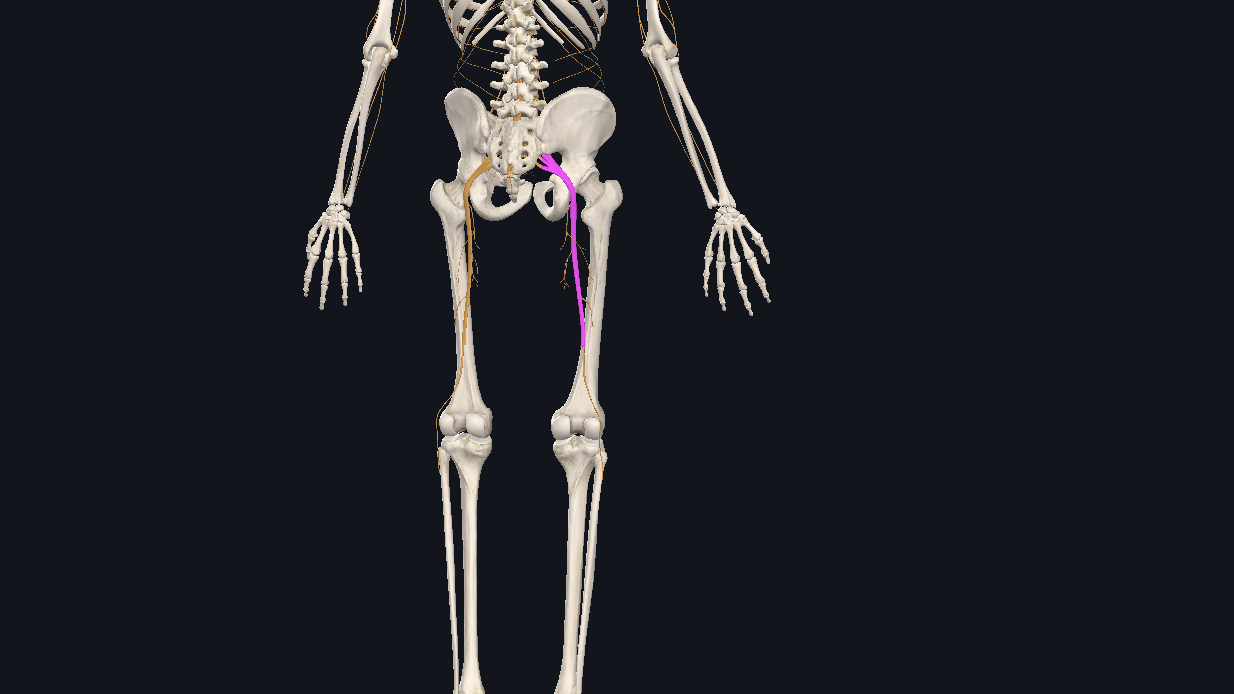
What is the Sciatic Nerve?
The sciatic nerve is the big, long, thick nerve that runs from the front side of the pelvis where the lumbar nerve roots come, through the pelvis, and then runs down the backside. Now keep in mind, what you don’t see are all the tiny little nerves branching off that supply function and sensory components to the gluteal muscles.
So as we slowly add some of these muscle layers on, we have deeper levels of the glute this is the piriformis which often gets blamed for sciatica symptoms. But we believe it’s not as important as other issues.
Your glutes cover that, so a lot of times the pain in the hip is a sign of a pinched nerve. Likely something in the back is causing a pinched nerve and that’s why you’re getting symptoms that are referred down into the leg. From time to time, you can get sciatic symptoms that are all the way down past the knee and into the foot and into the lower extremity.
But more commonly, we see this happen in the hip. What I want you to take note of are the lower back structures. In between all the lumbar vertebrae, there are discs, and in between the discs, there are the nerve roots coming in and out of the spinal column. These nerve roots then come down together and create the sciatic nerve. This is where a pinched nerve often occurs, a lot more frequently than the classic piriformis syndrome that gets blamed.

Where Does the Pain Come From?
Sciatic pain is a very common diagnosis, and it is even more commonly misdiagnosed, as it is used as a general kind of region open for interpretation. But we want to be more specific with the diagnosis so that you can be very time efficient with your exercises. Usually, as we feel a pinched nerve, we would assume that the side of the pain is where the actual pinched nerve is. However, those tender points that you feel in the glutes and down to the leg might just be a symptom of the pinched nerve that’s up higher.
Many people are just rolling out and stretching and not getting the relief that they need and deserve, because they were improperly instructed. They don’t realize it’s actually coming from their back, but rather, they think it’s coming from their hip, or their piriformis, or their hamstring, or something like that. But if you start to pay attention to when your symptoms in your leg increase, I have a feeling that you’re going to also find that your lower back pain symptoms tension or whatever that might be, might also be increasing, which would be highly indicative that the pain is coming from the back and not necessarily the leg.
We wanted to explain this so you can understand why we’re giving you exercises specific to the lower back. There are methods and strategies that can help alleviate sciatic symptoms, but we’re talking about fixing, we’re not just talking about alleviating. Alleviating is putting a bandaid on it. But what we’re looking to do is actually find where the nerve is pinched, so that you can create solutions you actually need.
I hope you enjoy these exercises, which are going to be super helpful for you.
Best Movements for Sciatic Nerve Pain
1. Door Squats
Our first exercise is for those who are having sciatic pain and hip pain associated with lower back pain. Door squats allow you to offload the lower back into the hips, so that you can continue to move and not overload them where they feel like they’re only getting tighter.
Grab both handles on either side of an open door. Have a wide stance in order to maximize range of motion in the hips without flexing the lower back.
Then lean back like you’re water skiing so your arms take over most of the slack and weight. As you squat, use your legs, hips, and quads, as well as your arms to help guide you. Lean all the way back, using the best form possible, but also use the doorknobs to help keep your spine nice and straight.
2. Quadruped Hip Drops
Quadruped hip drops help alleviate all the tension in the lower back. It also works to help reduce any pain that may be caused by a herniated disc or pinched nerve that causes pain down the legs.
Start on your hands and knees, with your hands slightly in front of your shoulders. From there, shift your body forward, and gently let your hips sag to the ground in an “upward dog” position. Be sure not to force your hips down, but rather, let gravity guide you down as your arms prop you up. Repeat this back-and-forth motion until you feel some release.
3.Hip Hinge Movement
The constant motion of bending over not only puts tension on the sciatic nerve but also puts pressure on the lower back. Our solution is a simple hip hinge movement.
Every time you bend over, likely to pick something up around the house, be sure you’re bending and folding at the hips in order to maintain a straight long spine. This puts the weight into the hamstrings and legs, rather than the lower back. The hips simply go back and forth. Shift the hips, bend at the knees, and avoid loading weight in the lower back.
Conclusion
And there you have it!
Our top three exercises for fixing sciatic nerve pain. These are simple, but they’re so powerful. We hope you will find at least one exercise that works best for you. Take them step by step, inch by inch, But remember, it takes application. You can’t just do one set of 20 and be healed. If we’re assuming there’s an issue causing this, it’s going to take repetition multiple times a day, even once an hour, depending on what the severity is.
Take them step by step, inch by inch, and soon it’ll be a habit. But if it’s not creating a benefit, then we encourage you to seek external help and dive deeper into figuring out what will work for you.
Please share this with someone you know that is suffering from sciatic symptoms, and we hope that it brings you or them as much relief and benefit that it’s brought myself, and our patients here at Live Lab.
Keep up the great work and Live LOUD!
A Better Way To Stretch Your Tight Hips
A Better Way To Stretch Your Tight Hips
We sit too much.
Our exercise programs are repetitive and boring.
We lack variety and complexity.
The hip is a big ball and socket joint and it needs load, it needs variability, it needs movement.
Hi, my name is Dr. Antonio with Llive Loud Chiropractic and Coaching here in Lafayette, Colorado. And today, we’re going to show you just a spin-off of the basic figure for a hip stretch or pigeon stretch.
But with this particular movement, we’re showing how to make it just a little bit easier, especially if you have really tight hips, and you use the leverage of the wall to help you. This prevents you from having to crank or pull on your leg or your knee, potentially making it a little bit more uncomfortable.
PLAY VIDEO ⬇︎
How to Stretch Your Hips Better
- You are going to start by having both my legs up against the wall, the leg that I am choosing to stretch on, I’m going to bend and I’m going to put it across the other leg
- I’m going to start to slide the other foot down the wall.
- You should feel a nice deep stretch in the glutes/butt Now what’s great here too, is now my foot driving, not driving, but pretty much posting up against the wall, I can just rest here.
- Relax and breathe, and sit deeper and deeper into that stretch.
Again, if you push too hard, you’re only going to tense up and make it worse. As that starts to release a little bit more you can slide the foot down deepens the stretch. And you can also play around with very gently leaning into your knee or changing that kind of torque and leverage position to hit different parts of that glute complex or fibers around the hip. Again, we’re looking for holding for anywhere upwards 30 seconds to two minutes depending on how tight you are. And depending on again what you can tolerate as always sliding over.
What Should You Do After You Stretch?
It is important that after you go through any sort of stretching exercise or program, move afterward, don’t go back and sit down, utilize what you just created by maybe doing some squats, maybe doing some hip hinges, maybe going for a walk or maybe even doing some lunges, but you have to move and you have to show your body what that new range of motion can and should be able to do.
Keep up the great work and Live LOUD!
Share below with a friend or loved one!
Fix Your Feet & Improve Mobility With Tall Kneeling Sit
Fix Your Feet & Improve Mobility With Tall Kneeling Sit
Did you know that it’s estimated that 60% of your propulsion forces off of your foot are coming through your great toe? As we walk and we run we actually need to pronate towards that terminal push-off phase and we should be rolling off of that big toe.
Many people are lacking big toe or great toe extension, thus leading to a super-stiff joint which could cause issues such as plantar fasciitis, up the chain, knee pain, and comm sometimes commonly even low back and or hip pain.
Now, something to consider is why this happens in the first place. Our sedentary lifestyle of sitting for too long, not moving our feet, and one of the big ones is keeping your feet into very tight restrictive shoes that prevent the toe from moving at all.
PLAY VIDEO ⬇︎
Free the Feet!
So we do encourage barefoot walking and a good amount of barefoot training depending on what your environment is and what your lifestyle on how much that allows.
So the exercise, you’re going to be on your knees, if you need a little bit of pat on your knees, go ahead and do so notice how my tops and my feet are on the ground, I’m actually going to flip that so that my toes are on the ground. And from here, I’m simply going to try to sit back my butt to my heels.
I want to see if you can sit here for 10 seconds.
And then we’re going to come up and we’re going to work up to a 20-sec tolerable sit.
Tolerable means, you can be in the position with mild discomfort or irritation while being able to breathe and maintain the positioning
What To Do If You Have Joint Pain or Irritation
Now, if you have any sort of Orthopedic joint restrictions, joint replacements or like that that can make this compromising. As always, reach out to your medical provider, your Chiropractor, your PT or coach to see if this is right for you.
Something that can help though is if you have a door, or maybe some a suspension trainer or something like a beat a bandage or some that you can hold on to that can help take some of that load off so that you can work into this exercise a little bit more gradually, rather than just dropping all of your weight. Okay, if you do have some knee restrictions, you can sometimes put a pillow or a pad behind your knees and that can take some of that pressure off. But again, we’re looking for working up to 20 seconds of a tolerable said not that any movement especially if you are tight is going to be completely pain free. But that tolerable movement will get better and better the more you do it, we do not want to be creating pain. So take note of that. But this is a fantastic exercise to work on your foot range of motion, which improves your balance which improves your proprioception which will oftentimes have huge carryover to athletic performance or whatever activity you enjoy.
Keep up the great work and Live LOUD!
Share below with a friend or loved one!
Why Everyone Needs To Be Doing Goblet Squats
Why Everyone Needs To Be Doing Goblet Squats
Are you unsure about what squat technique is right for you? Many of you know, squats are really beneficial, but maybe they hurt your hips, your knees or your back. Even though squatting is a fantastic exercise it can be a challenging movement. So I’m going to give you my favorite squat exercise, and why I think everyone should be doing the goblet squat.
My name is Dr. Antonio with live loud Chiropractic and coaching here in Lafayette, Colorado. And today, we’re reviewing my favorite movement, the goblet squat.
This one movement covers a lot of ground for me, allowing me to hit many different areas of my body.
PLAY VIDEO ⬇︎
What is the Goblet Squat
The goblet squat is simply just you holding a weight out in front of your chest, and going through the squat motion. I do not care about depth. But if the depth is one of the things that makes you unbalanced, or maybe it’s more challenging for your knees, your low back, that’s something we want to check but that is not the intention right now.
What is really beneficial about the goblet squat is when I hold the weight out in front of me, I have shifted my center of mass slightly forward. So that really forces my abdominal wall and my back, which we do want to strengthen our back to help for longevity and reducing chances of injury. It really helps target those areas by just holding the weight.
And it’s much different than any other form of squatting like front squats or back squats.
Now one point that I will give is, you need to understand what squat stance is right for you. If you don’t know, feel free to go to our YouTube channel, we have an extensive video that talks about squat stance. But if you’re not sure, it is very helpful to understand what squat stance is right for you. Find a width and a toe angle that works right for you.
Stay Under the kettlebell during the Goblet Squat
- Hold that weight and pull elbows underneath the weight.
- Do not let the weight pull you forward when you go down
- As you go down. I want to make sure I’m staying underneath the weight.
- Arms pivot forward slightly. Right. I want to make sure I stay under that weight so it’s not pulling me forward.
- Forearms stay vertical
- I want you to think about spreading your hips apart so that your torso can hopefully sit in between.
Okay, you can structure this into your workout a lot of different ways. But the goblet squat, I feel is one of the things that everyone should be doing and helps you mobilize your joints and helps you get stronger a number of different areas added in, ask questions, reach out to your trainer, your coach and see if this might be a good or the right exercise for you.
Keep up the great work and Live LOUD!
Share below with a friend or loved one!



